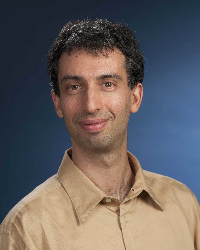Current events
From SIAG-FM
| Revision as of 22:09, 25 January 2021 (edit) Cialenco (Talk | contribs) (→Forthcoming Talks) ← Previous diff |
Current revision (16:07, 7 October 2024) (edit) (undo) Ccuchiero (Talk | contribs) (→Past Talks) |
||
| (256 intermediate revisions not shown.) | |||
| Line 4: | Line 4: | ||
| The series of virtual talks, started by [https://www.siam.org/membership/activity-groups/detail/financial-mathematics-and-engineering the SIAM Activity Group on Financial Mathematics and Engineering (SIAG/FME)], aims at keeping the mathematical finance community connected worldwide beyond traditional formats. The goal is to host a diverse, across all dimensions, lineup of prominent speakers that will present the latest developments in the area of financial mathematics and engineering. | The series of virtual talks, started by [https://www.siam.org/membership/activity-groups/detail/financial-mathematics-and-engineering the SIAM Activity Group on Financial Mathematics and Engineering (SIAG/FME)], aims at keeping the mathematical finance community connected worldwide beyond traditional formats. The goal is to host a diverse, across all dimensions, lineup of prominent speakers that will present the latest developments in the area of financial mathematics and engineering. | ||
| - | <jsmath>\diamond</jsmath> The talks will run every other week, and at least until the next [https://www.siam.org/conferences/cm/conference/fm21 SIAG/FME Biennial Meeting in June 2021] | + | * The talks will be once a month, usually on the second Thursday of the month. |
| + | * The talks will alternate with those set up by the [https://www.bachelierfinance.org/bachelier-finance-society-world-seminars-online Bachelier Finance Society] | ||
| + | * All talks will be delivered remotely using Zoom. | ||
| + | * The talks are open to the public. Due to security reasons, '''all attendees have to register'''. | ||
| + | * The registration link will be posted on this web-site, next to the each seminar date below. The detailed information about each talk, and the registration link will be also distributed via SIAM-Engage platform. | ||
| + | * The registration is quick (asks only for your name and email), and once registered, you will receive an email with the link to the meeting(s), which is unique to you, so please do not share that email. The registration is usually valid for multiple future talks. | ||
| - | <jsmath>\diamond</jsmath> The talks will alternate with those set up by the [https://www.bachelierfinance.org/bachelier-finance-society-world-seminars-online Bachelier Finance Society] | ||
| - | <jsmath>\diamond</jsmath> All talks will be delivered remotely using Zoom. | + | '''SIAG/FME Seminar Series Committee:''' |
| - | <jsmath>\diamond</jsmath> The talks are open to the public. Due to security reasons, '''all attendees have to register'''. | + | * Chair: [https://www.maths.ox.ac.uk/people/samuel.cohen Samuel Cohen], |
| + | * Vice Chair: [https://homepage.univie.ac.at/christa.cuchiero/ Christa Cuchiero], | ||
| + | * Program Director: [https://personal.lse.ac.uk/veraart/ Luitgard A. M. Veraart], | ||
| + | * Secretary: [https://sites.google.com/site/ibrahimekren/home Ibrahim Ekren] | ||
| - | <jsmath>\diamond</jsmath> The registration link will be posted on this web-site, next to the each seminar date below. The detailed information about each talk, and the registration link will be also distributed via [http://lists.siam.org/mailman/listinfo/siam-fme SIAG/FME Mailing List]. | ||
| - | <jsmath>\diamond</jsmath> The registration is quick (asks only for your name and email), and once registered, you will receive an email with the link to the meeting(s), which is unique to you, so please do not share that email. The registration is usually valid for multiple future talks. | + | The committee is in charge of the scientific component of the seminar, including selecting the speakers and the format of the events. Suggestions from the public on potential speakers, covered topics as well as general recommendation on how to improve the series are welcome and can be addressed to any committee member. |
| - | '''SIAG/FME Seminar Series Committee:''' | + | ---- |
| + | === Forthcoming Talks === | ||
| - | <jsmath>\quad</jsmath> [http://www.columbia.edu/~ac3827/ Agostino Capponi] (SIAG/FME Chair, Columbia University) | + | '''October 10, 2024, 1PM-2PM (EST)''' [https://siam.zoom.us/webinar/register/WN_s8rIcHwiS-uPM3Dkuok-Wg Registration link] |
| - | <jsmath>\quad</jsmath> [https://sites.google.com/view/cialenco Igor Cialenco] (SIAG/FME Program Director, Illinois Institute of Technology) | + | ''Speaker:'' [https://www.buffalo.edu/cas/math/people/faculty/bichuch.html Maxim Bichuch], University at Buffalo |
| - | <jsmath>\quad</jsmath> [http://sebastian.statistics.utoronto.ca/ Sebastian Jaimungal] (University of Toronto) | + | [[Image:maxim1.jpg]] |
| - | <jsmath>\quad</jsmath> [https://sircar.princeton.edu/ Ronnie Sircar] (Princeton University) | + | ''Title:'' A Deep Learning Scheme for Solving Fully Nonlinear Partial Differential Equation |
| + | ''Abstract:'' We study the convergence of a deep learning algorithm applied to a general class of fully nonlinear second order Partial Differential Equations. By using a suitable finite difference approximation to the loss function of the deep learning scheme we show the convergence of the numerical solution to the unique viscosity solution. We apply our results and illustrate this convergence to the finite horizon optimal investment problem with proportional transaction costs in single and multi-asset settings. | ||
| + | |||
| + | ''Bio:'' Maxim Bichuch holds a M.S. from NYU and a Ph.D. from CMU both in Financial Mathematics. He has been a Postdoctoral Research Associate & Lecturer in the ORFE department in Princeton, and an Assistant Professor at WPI and JHU, before joining the department of Mathematics at UB. Prior to obtaining his Ph.D. He has also gained corporate experience working for Citigroup and Bear Stearns. His research interests include optimal portfolio selection, optimal investment and consumption, optimal control with transaction costs, viscosity solutions, stochastic volatility, credit, funding and counterparty risks, and most recently electricity markets, machine learning, decentralized finance and fintech. | ||
| - | === Forthcoming Talks === | ||
| ---- | ---- | ||
| ---- | ---- | ||
| + | === Past Talks === | ||
| + | '''June 13, 2024, 1PM-2PM (EST)''' | ||
| + | ''Speaker:'' [https://users.renyi.hu/~rasonyi/ Miklós Rásonyi], HUN-REN Alfréd Rényi Institute of Mathematics | ||
| + | [[Image:miklos.jpg]] | ||
| - | '''Thursday, January 21, 2021, 1PM-2PM''' [https://siam.zoom.us/webinar/register/WN_s8rIcHwiS-uPM3Dkuok-Wg Registration Link] | + | ''Title:'' Portolio choice for exponential investors when prices are mean-reverting |
| + | ''Abstract:'' Several asset classes show mean-reverting features, e.g. commodities, commodity futures, | ||
| + | long-term safe assets (gold). We investigate the portfolio choice problem for | ||
| + | investors with exponential utilities (=high risk aversion) as the investment horizon T | ||
| + | tends to infinity. It turns out that the optimal equivalent safe rate grows in a superlinear | ||
| + | way, depending on the strength of the mean-reversion effect. We cannot find | ||
| + | the exact optimisers but construct a family of simple, explicit strategies that | ||
| + | are optimal asymptotically (they generate equivalent safe rates of the optimal order). | ||
| + | Interestingly, the presence or absence of a drift leads to entirely different | ||
| + | conclusions, the nonzero drift case spectacularly outperforming the driftless one. | ||
| + | Time permitting, we also review some related results on fractional Brownian motion. | ||
| - | ''Speaker:'' '''[https://sites.google.com/site/alvarocartea/home Alvaro Cartea]''', University of Oxford | + | ''Bio:'' Miklos Rásonyi completed his PhD in 2002 and has been working at the Computer Institute of the |
| + | Hungarian Academy of Sciences and at Péter Pázmány Catholic University till 2009. | ||
| + | He was also member of the Financial and Actuarial Mathematics Research Group at | ||
| + | Technical University, Vienna (2005-2007). From 2009 to 2013 he was at the University | ||
| + | of Edinburgh, since 2013 he works at the Rényi Institute of Mathematics. In 2017 he | ||
| + | obtained the degree of Doctor of the Hungarian Academy of Sciences. His current research | ||
| + | concentrates on optimal investment, Markov chains in random environment and | ||
| + | sampling algorithms for machine learning. | ||
| - | [[Image:Alvaro1.jpg]] | + | ---- |
| + | '''May 9, 2024, 1PM-2PM (EST)''' | ||
| - | ''Title:'' Optimal Execution with Stochastic and Deterministic Delay | + | ''Speaker:'' [https://www.cmu.edu/math//people/faculty/shkolnikov.html Mykhaylo Shkolnikov], Carnegie Mellon University |
| - | ''Abstract:'' We show how traders use aggressive immediate execution limit orders (IELOs) to liquidate a position when there are random delays in all the steps of a trade, i.e., there is latency in the marketplace and latency is random. We frame our model as a delayed impulse control problem in which the trader controls the times and the price limit of the IELOs she sends to the exchange. Our paper is the first to study an optimal liquidation problem that accounts for: random delays, price impact, and transaction costs. We introduce a new type of impulse control problem with stochastic (or deterministic) delay, not previously studied in the literature. The value functions are characterised as the solution to a coupled system of a Hamilton-Jacobi-Bellman quasi-variational inequality (HJBQVI) and a partial differential equation. We use a Feynman-Kac representation to reduce the system to a HJBQVI, for which we prove existence and uniqueness in a viscosity sense. We employ foreign exchange high-frequency trade data to implement the random-latency-optimal strategy and to compare it with four benchmarks: executing the entire order at once, optimal execution with deterministic latency, optimal execution with zero latency, and time-weighted average price. For example, in the EUR/USD currency pair, we show that the random-latency-optimal strategy and the deterministic-latency optimal strategy outperform the benchmarks between 3 USD per million EUR traded and 110 USD per million EUR traded, this is between one and 37 times the value of the transaction fees paid by liquidity takers. | + | [[Image:misha.jpg]] |
| - | Joint work with and Leandro Sanchez Betancourt. | + | |
| + | ''Title:'' Pathwise entropy solutions of SPDEs via rank-based models with common noise | ||
| - | ''Moderator:'' [https://sites.google.com/view/cialenco Igor Cialenco], Illinois Institute of Technology | + | ''Abstract:'' I will explain how pathwise entropy solutions of SPDEs, recently introduced by Gess and Souganidis (building on prior work by Lions, Perthame and Souganidis), arise from rank-based models of stochastic portfolio theory. In the process, we will discuss the probabilistic nature of pathwise entropy solutions when the driving path is Brownian. Based on joint work with Lane Chun Yeung. |
| + | |||
| + | ''Bio:'' Professor of Mathematical Sciences, Professor Shkolnikov earned his PhD in Mathematics from Stanford University in 2012. Before joining Carnegie Mellon University, he was an Associate Professor of Operations Research and Financial Engineering at Princeton University. Professor Shkolnikov is the recipient of the 2018 Erlang Prize by the INFORMS Applied Probability Society and of the 2019 Early Career Prize by the SIAM Activity Group on Financial Mathematics & Engineering. He serves as an Associate Editor for Annals of Applied Probability, Applied Mathematical Finance, and Mathematical Finance. His research interests include stochastic portfolio theory, (stochastic) partial differential equations, random matrices, and models of random growth. | ||
| ---- | ---- | ||
| + | '''April 11, 2024, 1PM-2PM (EST)''' | ||
| - | '''Thursday, February 4, 2021, 1PM-2PM''' | + | This seminar was an early career session with the following two speakers: |
| - | ''Speaker:'' '''[https://profiles.sussex.ac.uk/p2765-carol-alexander Carol Alexander]''', Professor of Finance, University of Sussex | + | ''Speaker 1:'' [https://sites.google.com/view/ofelia-bonesini Ofelia Bonesini], Imperial College London |
| - | ''Title:'' TBA | + | [[Image:Ofelia1.jpg]] |
| - | ''Abstract:'' TBA | + | ''Title:'' Rough volatility, path-dependent PDEs and weak rates of convergence |
| - | ''Moderator:'' [http://sebastian.statistics.utoronto.ca/ Sebastian Jaimungal], University of Toronto | + | ''Abstract:'' In the setting of stochastic Volterra equations, and in particular rough volatility models, we show that conditional expectations are the unique classical solutions to path dependent PDEs. The latter arise from the functional Itô formula developed by [Viens, F. Zhang, J. (2019). A martingale approach for fractional Brownian motions and related path dependent PDEs. Ann. Appl. Probab.]. We then leverage these tools to study weak rates of convergence for discretised stochastic integrals of smooth functions of a Riemann-Liouville fractional Brownian motion with Hurst parameter H in (0,1/2). These integrals approximate log-stock prices in rough volatility models. We obtain weak error rates of order 1 if the test function is quadratic and of order H+1/2 for smooth test functions. |
| + | |||
| + | |||
| + | ''Speaker 2:'' [https://sites.google.com/view/joejackson/home Joe Jackson], University of Chicago | ||
| + | |||
| + | [[Image:Joe1.jpg]] | ||
| + | |||
| + | ''Title:'' Sharp convergence rates for mean field control on the region of strong regularity | ||
| + | |||
| + | ''Abstract:'' This talk will be about the convergence of certain symmetric N-particle stochastic control problems towards their mean field limits. After an introduction to mean field control, we will mainly discuss the following question: how fast do the value functions $V^N$ for the N-particle problems converge towards the value function U of the mean field problem? If the data is smooth and convex, then U is smooth, and the rate is $O(1/N)$. When the data is not convex, U may fail to be smooth, and the answer is more subtle. On one hand, we know that the optimal global rate cannot be better than $O(1/\sqrt{N})$. On the other hand, a recent paper of Cardaliaguet and Souganidis identifies an open and dense set O of initial conditions (which we call the region of strong regularity, by analogy with some classical results on first order Hamilton-Jacobi equations) where U is smooth, and it is natural to wonder whether the rate of convergence might be better inside of O. In an ongoing joint work with Cardaliaguet, Mimikos-Stamatopoulos, and Souganidis, we show that this is indeed the case: the rate is $O(1/N)$ locally uniformly inside the set O, so the convergence is indeed faster inside O than it is outside. | ||
| Line 69: | Line 112: | ||
| + | '''March 14, 2024, 1PM-2:30PM (EST)''' | ||
| - | '''Thursday, March 4, 2021, 1PM-2PM''' | + | SIAG/FME CodeQuest 2024 Finalists |
| + | |||
| + | This SIAG/FME virtual seminar featured the five finalist (Team Floor F, UW Goose, Blanco, APAM, and QuantHub) in the SIAG/FME CodeQuest 2024. This year’s CodeQuest featured a problem based on Decentralized Finance and Automated Asset Management. Teams were tasked first with the challenge of implementing aspects of an automatic market maker (AMM) and second with constructing a portfolio over a pool of AMMs that minimizes the portfolio’s CVaR while simultaneously attaining a probabilistic constraint on terminal wealth. Teams had the chance to present their approach to the optimization problem and field questions from the committee. | ||
| - | ''Speaker:'' '''[http://www.math.columbia.edu/~mnutz/ Marcel Nutz]''', Columbia University | ||
| - | ''Title:'' TBA | + | ---- |
| + | |||
| + | '''February 8, 2024, 1PM-2PM (EST)''' | ||
| + | |||
| + | ''Speaker:'' [https://www.kcl.ac.uk/people/ryan-donnelly Ryan Donnelly], King's College London | ||
| + | |||
| + | [[Image:ryan.jpg]] | ||
| + | |||
| + | ''Title:'' Dynamic Inventory Management with Mean-Field Competition | ||
| + | |||
| + | |||
| + | |||
| + | ''Abstract:'' Agents attempt to maximize expected profits earned by selling multiple units of a perishable product where their revenue streams are affected by the prices they quote as well as the distribution of other prices quoted in the market by other agents. We propose a model which captures this competitive effect and directly analyze the model in the mean-field limit as the number of agents is very large. We classify mean-field Nash equilibrium in terms of the solution to a Hamilton-Jacobi-Bellman equation and a consistency condition and use this to motivate an iterative numerical algorithm to compute equilibrium. Properties of the equilibrium pricing strategies and overall market dynamics are then investigated, in particular how they depend on the strength of the competitive interaction and the ability to oversell the product. | ||
| + | |||
| - | ''Abstract:'' TBA | ||
| - | ''Moderator:'' | ||
| ---- | ---- | ||
| - | '''Thursday, April 1, 2021, 1PM-2PM''' | + | '''January 11, 2024, 1PM-2PM (EST)''' |
| + | |||
| + | ''Speaker:'' [https://sites.google.com/site/athenapicarelli/home/education Athena Picarelli], University of Verona | ||
| + | |||
| + | [[Image:athena.jpg]] | ||
| + | |||
| + | ''Title:'' A deep solver for BSDEs with jumps | ||
| + | |||
| + | |||
| + | |||
| + | ''Abstract:'' The aim of this work is to propose an extension of the deep solver by Han, Jentzen, E (2018) to the case of forward backward stochastic differential equations (FBSDEs) with jumps. As in the aforementioned solver, starting from a discretized version of the FBSDE and parametrizing the (high dimensional) control processes by means of a family of artificial neural networks (ANNs), the FBSDE is viewed as model-based reinforcement learning problem and the ANN parameters are fitted so as to minimize a prescribed loss function. We take into account both finite and infinite jumpactivity by introducing, in the latter case, an approximation with finitely many jumps of the forward process. We successfully apply our algorithm to option pricing problems in low and high dimension and discuss the applicability in the context of counterparty credit risk. | ||
| - | ''Speaker:'' '''[https://sites.google.com/site/timleungresearch/ Tim Leung]''', University of Washington | ||
| - | ''Title:'' TBA | ||
| - | ''Abstract:'' TBA | ||
| - | ''Moderator:'' | ||
| ---- | ---- | ||
| - | . | ||
| - | === Past Talks === | ||
| + | |||
| + | '''December 14, 2023, 1PM-2PM (EST)''' [https://siam.zoom.us/webinar/register/WN_s8rIcHwiS-uPM3Dkuok-Wg Registration link] | ||
| + | |||
| + | ''Speaker:'' [https://www.yujui-huang.com/home Yu-Jui Huang], University of Colorado Boulder | ||
| + | |||
| + | [[Image:yu-jui1.jpg]] | ||
| + | |||
| + | ''Title:'' Partial Information Breeds Systemic Risk | ||
| + | |||
| + | ''Abstract:'' We consider finitely many investors who perform mean-variance portfolio selection under a relative performance criterion. That is, each investor is concerned about not only her terminal wealth, but how it compares to the average terminal wealth of all investors (i.e., the mean field). At the inter-personal level, each investor selects a trading strategy in response to others' strategies (which affect the mean field). The selected strategy additionally needs to yield an equilibrium intra-personally, so as to resolve time inconsistency among the investor's current and future selves (triggered by the mean-variance objective). A Nash equilibrium we look for is thus a tuple of trading strategies under which every investor achieves her intra-personal equilibrium simultaneously. We derive such a Nash equilibrium explicitly in the idealized case of full information (i.e., the dynamics of the underlying stock is perfectly known), and semi-explicitly in the realistic case of partial information (i.e., the stock evolution is observed, but the expected return of the stock is not precisely known). The formula under partial information involves an additional state process that serves to filter the true state of the expected return. Its effect on trading is captured by two degenerate Cauchy problems, one of which depends on the other, whose solutions are constructed by elliptic regularization and a stability analysis of the state process. Our results indicate that partial information alone can reduce investors' wealth significantly, thereby causing or aggravating systemic risk. Intriguingly, in two different scenarios of the expected return (i.e., it is constant or alternating between two values), our Nash equilibrium formula spells out two distinct manners systemic risk materializes. This is joint work with Li-Hsien Sun. | ||
| + | |||
| + | ''Moderator:'' [https://people.maths.ox.ac.uk/cohens/ Sam Cohen], University of Oxford | ||
| ---- | ---- | ||
| + | |||
| + | '''November 9, 2023, 1PM-2PM (EST)''' | ||
| + | |||
| + | ''Speaker:'' [https://pesenti.utstat.utoronto.ca/ Silvana Pesenti], University of Toronto | ||
| + | |||
| + | [[Image:silvana1.jpg]] | ||
| + | |||
| + | ''Title:'' Dynamic robust risk measures with applications | ||
| + | |||
| + | ''Abstract:'' This talk is focused on distributionally robust risk measures, which are the largest value a risk measure can attain within an uncertainty set. Uncertainty sets are typically characterised by balls around a reference distribution, thus containing plausible alternative distributions. I first discuss worst-case distortion risk measures for Wasserstein uncertainty sets and an application to portfolio optimisation. | ||
| + | Second, I discuss the dynamic setting, where the risk of stochastic processes is evaluated using time-consistent dynamic risk measures. In the dynamic setting I introduce dynamic robust risk measures and dynamic uncertainty sets and study conditions on the uncertainty sets that lead to well-known properties of dynamic robust risk measures, such as convexity and coherence. Furthermore, we proof necessary and sufficient properties for a robust dynamic risk measures to be time-consistent and to admit a recursive representation. | ||
| + | |||
| + | ''Moderator:'' [https://personal.lse.ac.uk/veraart/ Luitgard A. M. Veraart], LSE | ||
| ---- | ---- | ||
| + | |||
| + | |||
| + | '''October 12, 2023, 1PM-2PM (EST)''' | ||
| + | |||
| + | ''Speaker:'' [http://ludkovski.pstat.ucsb.edu Mike Ludkovski], University of California Santa Barbara | ||
| + | |||
| + | [[Image:Mike.jpg]] | ||
| + | |||
| + | ''Title:'' Machine Learning Surrogates for Parametric and Adaptive Optimal Execution | ||
| + | |||
| + | ''Abstract:'' We investigate optimal order execution with dynamic parametric uncertainty. Our base model features discrete time, stochastic transient price impact generalizing Obizhaeva and Wang (2013). We first consider learning the optimal strategy across a multi-dimensional range of model configurations, including price impact and resilience parameters, as well as initial stochastic states. We develop a numerical algorithm based on dynamic programming and deep learning, utilizing an actor-critic framework to construct two neural-network (NN) surrogates for the value function and the feedback control. We then apply the lens of adaptive robust stochastic control to consider online statistical learning of model parameters along with a worst-case min-max optimization. Thus, the controller is dynamically learning model parameters based on her observations while explicitly accounting for Bayesian uncertainty of the learned parameter estimates via a posterior uncertainty set. We propose a modeling framework which allows a time-consistent 3-way marriage between dynamic learning, dynamic robustness and dynamic control. We extend our NN approach to tackle the resulting 7-dimensional adaptive robust optimal order execution problem, and illustrate with comparisons to alternative frameworks, such as adaptive or static robust strategies. This is joint work with Moritz Voss (UCLA) and Tao Chen (QRM). | ||
| + | |||
| + | ''Moderator:'' Tomoyuki Ichiba, UCSB | ||
| + | ---- | ||
| + | |||
| + | |||
| + | |||
| + | |||
| + | '''September 14, 2023, 1PM-2PM (EST) Early career talks ''' | ||
| + | |||
| + | ''Speaker 1:'' [https://www.gokcedayanikli.com/ Gökçe Dayanıkli], University of Illinois Urbana-Champaign | ||
| + | |||
| + | [[Image:Gokce1.jpg]] | ||
| + | |||
| + | ''Title:'' Single level approach to solve Stackelberg Mean Field Games | ||
| + | |||
| + | ''Abstract:'' In this talk, we introduce the bi-level Stackelberg mean field game problem between a principal and a mean field of agents evolving on a continuous state space and discuss how to write it as a single-level problem to propose an efficient numerical solution. In the model, the agents in the population play a non-cooperative game and choose their controls to optimize their individual objectives by interacting with the principal and other agents in the society through the population distribution. The principal can influence the resulting mean field game Nash equilibrium through incentives in order to optimize her own objective. We analyze this game by using a probabilistic approach. We then rewrite this bi-level problem as a single-level problem and propose a numerical approach to solve the Stackelberg mean field game. We look at different financial applications such as the systemic risk model for a regulator and many banks and optimal contract between a principal and a large number of agents. (This is a joint work with Mathieu Lauriere.) | ||
| + | |||
| + | ''Speaker 2:'' [https://www.imperial.ac.uk/people/d.itkin David Itkin], Imperial College London | ||
| + | |||
| + | [[Image:David2.jpg]] | ||
| + | |||
| + | ''Title:'' Ergodic robust maximization of asymptotic growth with stochastic factors. | ||
| + | |||
| + | ''Abstract:'' We consider an asymptotic robust growth problem under model uncertainty and in the presence of (non-Markovian) stochastic covariance. Building on the previous work of Kardaras & Robertson we fix two inputs representing the instantaneous covariation and invariant density for the asset process X, but additionally allow these quantities to depend on a stochastic factor process Y. Under mild technical assumptions we show that the robust growth optimal strategy is functionally generated and, unexpectedly, does not depend on the factor process Y. Remarkably this remains true even if the joint covariation of X and Y is prescribed as an input. Our result provides a comprehensive answer to a question proposed by Fernholz in 2002. This talk is based on joint work with Benedikt Koch, Martin Larsson and Josef Teichmann. | ||
| + | |||
| + | |||
| + | ''Moderator:'' [https://sites.google.com/view/cialenco Igor Cialenco], Illinois Tech | ||
| + | ---- | ||
| + | |||
| + | |||
| + | |||
| + | |||
| + | '''May 11, 2023, 1PM-2PM (EST)''' Early Career Talks | ||
| + | |||
| + | ''Speaker 1:'' [https://sites.google.com/berkeley.edu/haoyang-cao/home Haoyang Cao], École Polytechnique | ||
| + | |||
| + | [[Image:Haoyang1.jpg]] | ||
| + | |||
| + | ''Title:'' Feasibility and Transferability of Transfer Learning: A Mathematical Framework | ||
| + | |||
| + | ''Abstract:'' Transfer learning is an emerging and popular paradigm for utilizing existing knowledge from previous learning tasks to improve the performance of new ones. Despite its numerous empirical successes, theoretical analysis for transfer learning is limited. In this talk we introduce for the first time, to the best of our knowledge, a mathematical framework for the general procedure of transfer learning. Our unique reformulation of transfer learning as an optimization problem allows the analysis of its feasibility. Additionally, we propose a novel concept of transfer risk to evaluate transferability of transfer learning. At the end we will demonstrate how this framework can be embedded in both a generic image classification problem and a portfolio optimization problem to demonstrate the potential and benefits of incorporating transfer risk in the evaluation of transfer learning performance. This talk is primarily based on “Feasibility and Transferability of Transfer Learning: A Mathematical Framework” by Cao, Gu, Guo and Rosenbaum. | ||
| + | |||
| + | |||
| + | |||
| + | ''Speaker 2:'' [https://sites.google.com/view/stephan-eckstein/startseite Stephan Eckstein], ETH Zürich | ||
| + | |||
| + | [[Image:Stephan1.jpg]] | ||
| + | |||
| + | ''Title:'' Numerical aspects of adapted optimal transport | ||
| + | |||
| + | ''Abstract:'' Recent work has established that the adapted Wasserstein distance satisfies many desirable theoretical properties for multi-period market models, guaranteeing for instance robustness against model misspecification and geodesic closedness of the set of martingale models. To actually benefit from such properties in practice, one requires ways to numerically calculate adapted optimal transport problems. The goal of this talk is to present various computational tools aimed at working with adapted optimal transport in practice. Among others, we show feasibility of discrete approximations for continuous problems and how to control errors introduced by regularization methods. Extending the classical theory, we introduce a variant of Sinkhorn's algorithm to solve the regularized problem and establish its exponential convergence. We will illustrate geometric aspects of the adapted optimal transport problem by numerically calculating model ensembles of different martingale models. Based on joint work with Gudmund Pammer. | ||
| + | |||
| + | |||
| + | ''Moderator:'' [https://www.lse.ac.uk/Mathematics/people/Luitgard-Veraart Luitgard Veraart] (London School of Economics and Political Science) | ||
| + | ----- | ||
| + | |||
| + | |||
| + | '''April 13, 2023, 1PM-2PM (EST)''' [https://siam.zoom.us/webinar/register/WN_s8rIcHwiS-uPM3Dkuok-Wg Registration link] | ||
| + | |||
| + | ''Speaker:'' [Mihai Sirbu https://web.ma.utexas.edu/users/sirbu/], Department of Mathematics, University of Texas at Austin | ||
| + | |||
| + | [[Image:Mihai1.jpg]] | ||
| + | |||
| + | ''Title:'' Backward martingale transport and Fitzpatrick functions in pseudo-Euclidean spaces | ||
| + | |||
| + | ''Abstract:'' : Motivated by a variant of the Kyle equilibrium model with insider from Rochet and Vila (94), we study a one-period multi-dimensional backward martingale problem with quadratic objective given by a bilinear form S. The role of the Kantorovich potentials is played by the Fitzpatrick functions. Based on joint work with Dmitry Kramkov: [ arXiv https://arxiv.org/abs/2209.04664]. | ||
| + | |||
| + | |||
| + | ''Moderator:'' [https://www.pstat.ucsb.edu/people/tomoyuki-ichiba Tomoyuki Ichiba] (University of California, Santa Barbara) | ||
| + | |||
| + | ---- | ||
| + | |||
| + | |||
| + | |||
| + | |||
| + | |||
| + | '''March 9, 2023, 1PM-2PM (EST)''' | ||
| + | |||
| + | ''Speaker:'' [http://sebastian.statistics.utoronto.ca/ Sebastian Jaimungal], Department of Statistical Sciences, University of Toronto | ||
| + | |||
| + | [[Image:Sebastian1.jpg]] | ||
| + | |||
| + | ''Title:'' Risk-Aware Reinforcement Learning for Finance | ||
| + | |||
| + | ''Abstract:'' Reinforcement learning (RL) is a model agnostic approach for “learning” optimal strategies where an agent is faced with maximizing or minimizing an objective functional over a class of strategies that are, in general, stochastic processes. Traditionally, in RL, the objective functionals are expectations of total running rewards/costs – and ignores risks. In this talk, I will provide an overview of some new approaches to pose and solve time consistent versions of risk-aware RL problems with applications to financial modeling. | ||
| + | (based on various joint works with Alvaro Cartea, Anthony Coache, Silvana Pesenti, Yuri Saporito, Rodrigo Targino, Hariam Tatsat, and Ye Sheng Wang) | ||
| + | |||
| + | |||
| + | ''Moderator:'' [https://people.maths.ox.ac.uk/cohens/ Sam Cohen] (University of Oxford) | ||
| + | |||
| + | ---- | ||
| + | |||
| + | |||
| + | |||
| + | '''February 9, 2023, 1PM-2PM (EST)''' | ||
| + | |||
| + | ''Speaker:'' [https://www.maths.ox.ac.uk/people/christoph.reisinger Christoph Reisinger], Mathematical Institute, University of Oxford | ||
| + | |||
| + | [[Image:Christoph1.jpg]] | ||
| + | |||
| + | ''Title:'' Risk management of option books with arbitrage-free neural-SDE market models | ||
| + | |||
| + | ''Abstract:'' Modelling joint dynamics of liquid vanilla options is crucial for arbitrage-free pricing of illiquid derivatives and managing risks of option trade books. This talk develops a nonparametric model for the European option book, respecting underlying financial constraints while being practically implementable. We derive a state space for prices which are free from static (or model-independent) arbitrage and study the inference problem where a neural SDE model is learnt from discrete time series data of stock and option prices. We validate our approach with numerical experiments using data generated from a Heston stochastic local volatility model and EURO STOXX 50 index data. A subsequent Value-at-Risk (VaR) backtesting analysis shows better coverage performance and less procyclicality than standard filtered historical simulation approaches. Finally, we derive sensitivity-based and minimum-variance-based hedging strategies. When applied to various portfolios of EURO STOXX 50 index options over usual and stressed market periods, our market models can lead to lower hedging errors than Black-Scholes delta-vega hedging, and are less sensitive to the choice of hedging instruments. | ||
| + | |||
| + | ''Moderator:'' [https://sites.google.com/view/cialenco Igor Cialenco] (Illinois Institute of Technology) | ||
| + | |||
| + | ---- | ||
| + | |||
| + | |||
| + | |||
| + | '''January 12, 2023, 1PM-2PM (EST)''' | ||
| + | |||
| + | ''Speaker:'' [https://www.kth.se/profile/sigridkn Sigrid Källblad], KTH Royal Institute of Technology | ||
| + | |||
| + | |||
| + | [[Image:PhotoSK.jpg]] | ||
| + | |||
| + | |||
| + | ''Title:'' Adapted Wasserstein distance between the laws of SDEs | ||
| + | |||
| + | ''Abstract:'' We consider here an adapted optimal transport problem between the laws of Markovian stochastic differential equations (SDEs) and establish optimality of the so-called synchronous coupling between the given laws. The proof of this result is based on time-discretisation methods and reveals an interesting connection between the synchronous coupling and the celebrated discrete-time Knothe–Rosenblatt rearrangement. We also provide a related result on equality of various topologies when restricted to certain laws of continuous-time stochastic processes. The talk is based on joint work with Julio Backhoff-Veraguas and Ben Robinson. | ||
| + | |||
| + | ''Moderator:'' [https://www.pstat.ucsb.edu/people/tomoyuki-ichiba Tomoyuki Ichiba] (University of California, Santa Barbara) | ||
| + | --- | ||
| + | |||
| + | |||
| + | |||
| + | |||
| + | '''December 8, 2022, 1PM-2PM (EST) Early Career Talks''' | ||
| + | |||
| + | ''Speaker 1:'' [https://www.wu.ac.at/en/statmath/faculty-staff/faculty/gabriela-kovacova/ Gabriela Kovacova], WU Vienna | ||
| + | |||
| + | [[Image:PhotoGK.jpg]] | ||
| + | |||
| + | ''Title:'' Set-valued Bellman's principle: evidence from the mean-risk problem | ||
| + | |||
| + | ''Abstract:'' Selecting a portfolio of risky assets which maximizes the expected terminal values at the same time as it minimizes portfolio risk is known as the mean-risk problem. The usual approach in the literature is to combine the mean and the risk to obtain a problem with a single objective. In a dynamic setting this scalarization, however, comes at the cost of time inconsistency. We show that these difficulties disappear by considering the problem in its natural form, that is, as a bi-objective optimization problem. As such the mean-risk problem satisfies an appropriate notion of time consistency, closely related to existence of a moving scalarization. Moreover, the mean-risk problem satisfies a Bellman's principle appropriate for a bi-objective optimization problem: a set-valued Bellman's principle. Based on joint work with Birgit Rudloff. | ||
| + | |||
| + | |||
| + | ''Speaker 2:'' [http://stat.columbia.edu/department-directory/name/johannes-wiesel/ Johannes Wiesel], Columbia University | ||
| + | |||
| + | [[Image:PhotoJW.jpg]] | ||
| + | |||
| + | ''Title:'' An optimal transport based toolbox for mathematical finance | ||
| + | |||
| + | ''Abstract:'' In this talk I explain how the theory of optimal transport (OT) can be used to obtain new characterisations of quantities of interest in mathematical finance. I give two examples: I first describe how OT provides a nonparametric measure of association between two random vectors. It has the interesting property that it is equal to zero if and only if the random vectors are independent, and equal to one if and only if there exists a function f, such that Y=f(X). Secondly, I show how convex order of probability measures can be characterised by OT in general dimensions. This characterisation is based on a combination of Brenier’s theorem and OT duality, and gives a computationally tractable way of checking convex order between arbitrary probability measures. | ||
| + | |||
| + | |||
| + | ''Moderator:'' [https://www.pstat.ucsb.edu/people/tomoyuki-ichiba Tomoyuki Ichiba] (University of California, Santa Barbara) | ||
| + | |||
| + | |||
| + | ---- | ||
| + | |||
| + | '''November 10, 2022, 1PM-2PM (EST)''' | ||
| + | |||
| + | ''Speaker:'' [http://www.maths.lse.ac.uk/Personal/jruf/ Johannes Ruf], London School of Economics and Political Science | ||
| + | |||
| + | [[Image:Ruf1.jpg]] | ||
| + | |||
| + | ''Title:'' Estimation of Growth in Fund Models | ||
| + | |||
| + | ''Abstract:'' For purposes of long-term investment portfolio choice, we study estimation of growth in fund models. The latter are statistical descriptions of markets where all asset returns are spanned by the returns of a lower-dimensional collection of funds, modulo orthogonal noise; equivalently, they may be characterised as models where the global growth-optimal portfolio only involves investment in the aforementioned funds. The loss of growth due to estimation error in fund models under local frequentist estimation is determined entirely by the number of funds. Furthermore, under a general filtering framework for Bayesian estimation, the loss of growth increases as the investment universe does. A shrinkage method that targets maximal growth with the least amount of deviation is proposed. Empirical evidence suggests that shrinkage gives a stable estimate that more closely follows growth potential than an unrestricted Bayesian estimate. | ||
| + | This is joint work with Kostas Kardaras and Hyeng Keun Koo. | ||
| + | SSRN: https://papers.ssrn.com/sol3/papers.cfm?abstract_id=4180821 | ||
| + | |||
| + | |||
| + | ''Moderator:'' [https://www.maths.ox.ac.uk/people/samuel.cohen Samuel Cohen] (University of Oxford) | ||
| + | |||
| + | ---- | ||
| + | |||
| + | '''October 13, 2022, 1PM-2PM (EST)''' | ||
| + | |||
| + | ''Speaker:'' [https://www.finance.uni-freiburg.de/mitarbeiter/prof.-dr.-e.-luetkebohmert-holtz Eva Lütkebohmert-Holtz], University of Freiburg | ||
| + | |||
| + | [[Image:Eva1.jpg]] | ||
| + | |||
| + | ''Title:'' Robust deep hedging | ||
| + | |||
| + | ''Abstract:'' We study pricing and hedging under parameter uncertainty for a class of Markov processes which we call generalized affine processes and which includes the Black–Scholes model as well as the constant elasticity of variance (CEV) model as special cases. Based on a general dynamic programming principle, we are able to link the associated nonlinear expectation to a variational form of the Kolmogorov equation which opens the door for fast numerical pricing in the robust framework. The main novelty of the paper is that we propose a deep hedging approach which efficiently solves the hedging problem under parameter uncertainty. We numerically evaluate this method on simulated and real data and show that the robust deep hedging outperforms existing hedging approaches in highly volatile periods. (Joint work with Thorsten Schmidt and Julian Sester.) | ||
| + | |||
| + | |||
| + | ''Moderator:'' [https://sites.google.com/view/cialenco Igor Cialenco] (Illinois Institute of Technology) | ||
| + | |||
| + | ---- | ||
| + | '''September 8, 2022, 1PM-2PM (EST)''' | ||
| + | |||
| + | ''Speaker:'' Agostino Capponi, Columbia University | ||
| + | |||
| + | [[Image:Agostino1.jpg]] | ||
| + | |||
| + | ''Title:'' The Adoption of Blockchain-Based Decentralized Exchanges | ||
| + | |||
| + | ''Abstract:'' Decentralized finance (DeFi) is a competitive marketplace of decentralized financial applications that operate through smart contracts, which currently manages over $57 billion USD. We investigate the market microstructure of Automated Market Makers (AMMs), the most prominent type of pricing functions implemented by DeFi exchanges, and highlight the fundamental differences with centralized limit order books. Through a dynamic game theoretical model we demonstrate that, in equilibrium, arbitrageurs extract gains from liquidity providers for a broad class of convex, twice differentiable, and positively homogeneous pricing functions. We show that pricing curves with higher convexity result in higher price impact, which reduces arbitrage and liquidity freezes, but also decreases trading volume. We provide statistical support for our model implications using transaction-level data of Uniswap and SushiSwap AMMs (joint work with R. Jia). | ||
| + | |||
| + | |||
| + | ''Moderator:'' [https://www.lse.ac.uk/Mathematics/people/Luitgard-Veraart Luitgard Veraart] (London School of Economics and Political Science) | ||
| + | |||
| + | ---- | ||
| + | ---- | ||
| + | '''June 9, 2022, 1PM-2PM (EST)''' | ||
| + | |||
| + | |||
| + | ''Speaker:'' Harvey Stein, Two Sigma Investments [https://youtu.be/ylyN94G_CJc Recorded video] | ||
| + | |||
| + | [[Image:Harvey1.jpg]] | ||
| + | |||
| + | ''Title:'' Model Invariants and Functional Regularization | ||
| + | |||
| + | ''Abstract:'' When modeling data, we would like to know that our models are extracting facts about the data itself, and not about something arbitrary, like the order of the factors used in the modeling. Formally speaking, this means we want the model to be invariant with respect to certain transformations. | ||
| + | |||
| + | Here we look at different models and the nature of their invariants. We find that regression, MLE and Bayesian estimation all are invariant with respect to linear transformations, whereas regularized regressions have a far more limited set of invariants. As a result, regularized regressions produce results that are less about the data itself and more about how it is parameterized. | ||
| + | |||
| + | To correct this, we propose an alternative expression of regularization which we call functional regularization. Ridge regression and lasso are special cases of functional regularization, as is Bayesian estimation. But functional regularization gives a framework under which the models become invariant with respect to linear transformations. It is also more flexible, and easier to understand, thus yielding a number of advantages over ridge regression and lasso. | ||
| + | |||
| + | ''Moderator:'' [https://people.maths.ox.ac.uk/cohens/ Sam Cohen] (University of Oxford) | ||
| + | ----- | ||
| + | |||
| + | |||
| + | |||
| + | '''May 12, 2022, 1PM-2PM (EST)''' | ||
| + | |||
| + | |||
| + | ''Speaker:'' [http://www.carole.bernard.free.fr/ Carole Bernard], Grenoble Ecole de Management / Faculty of Economics, Vrije Universiteit Brussel [https://youtu.be/m2AS_eo50V8 Recorded video] | ||
| + | |||
| + | [[Image:Carole1.jpg]] | ||
| + | |||
| + | ''Title:'' Multivariate Portfolio Choice via Quantiles | ||
| + | |||
| + | ''Abstract:'' Agents who optimize a univariate law-invariant increasing objective (e.g., an expected utility, a Cumulative Prospect Theory objective function) obtain optimal payoffs that are decreasing in the pricing kernel. Such observation plays a key role in the theory developed by He and Zhou (2011) on ``Portfolio Choice via Quantiles’’. In this paper, we first show how it is possible to extend this quantile approach to solve a multivariate optimal portfolio for some multivariate preferences (e.g., multivariate expected utility, inf-convolution of tail risk measures). Second, we develop a new approach allowing us to solve the multivariate optimal portfolio problem numerically. | ||
| + | |||
| + | This is based on joint papers with Luca Aquino De Gennaro, Andrea Perchiazzo and Steven Vanduffel. | ||
| + | |||
| + | ''Moderator:'' [https://www.lse.ac.uk/Mathematics/people/Luitgard-Veraart Luitgard Veraart] (London School of Economics) | ||
| + | |||
| + | ---- | ||
| + | |||
| + | '''April 14, 2022, 1PM-2PM (EST)''' | ||
| + | |||
| + | ''Speaker:'' [http://sircar.princeton.edu/ Ronnie Sircar], ORFE, Princeton University [https://youtu.be/qOeKzLBM5HM Recorded video] | ||
| + | |||
| + | [[Image:Ronnie1.jpg]] | ||
| + | |||
| + | ''Title:'' ORFEUS | ||
| + | |||
| + | ''Abstract:'' We describe part of a project, sponsored by ARPA-E, to quantify, allocate and account for the risk introduced to electricity grid due to the unpredictable reliability of production from renewables. Incorporating this stochasticity into grid risk management is viewed by the industry (which has remained almost entirely tethered to a deterministic viewpoint an in particular to weather forecasts) as increasingly crucial, as we aim for greater renewables penetration to reduce dependence on carbon-emitting fuels. Our methodology involves feeding Monte Carlo simulations of solar, wind and load into a grid optimization software that emulates the performance and costs of the Texas electricity grid. This outputs a distribution of running costs, from which we can numerically extract a measure of system (grid) risk. The more challenging part is to allocate this risk back (top down) to the individual renewable assets to assign them a reliability cost. This adapts exisiting approaches for the risk allocation problem related to Shapley values, but is computationally intense. We show results, project to potential future grids, and propose a way to incorporate the reliability costs back into the day ahead bid curve and thereby re-optimize unit commitment and economic dispatch of assets taking into (some) account the stochasticity. | ||
| + | |||
| + | This work is in collaboration with a team listed here: [https://orfeus.princeton.edu/ orfeus.princeton.edu] | ||
| + | and this part in particular with Michal Grzadkowski and Arvind Shrivats (both Princeton). | ||
| + | |||
| + | |||
| + | ''Moderator:'' [http://ichiba.faculty.pstat.ucsb.edu/ Tomoyuki Ichiba] (University of California Santa Barbara) | ||
| + | |||
| + | ---- | ||
| + | |||
| + | '''March 10, 2022, 1PM-2PM (EST)''' '''Early Career Talks''' [https://www.youtube.com/watch?v=avuHe-gQdL8 Recorded video] | ||
| + | |||
| + | ''Speaker 1:'' [http://mesiasalfeus.weebly.com/ Mesias Alfeus], Stellenbosch University | ||
| + | |||
| + | [[Image:Mesias1.jpg]] | ||
| + | |||
| + | ''Title:'' Quantitative Finance: Toward A General Framework for Modelling Roll-Over Risk | ||
| + | |||
| + | ''Abstract:'' Quantitative Finance underwent significant development over the past decade. For example, modelling of the term structure of interest rates after the GFC poses a unique challenge. The persistent phenomena of market basis spreads are an indication that markets are pricing various risks which are not captured in classical models. We pioneer a roll-over risk modelling framework to provide empirical evidence to the observed basis spreads, i.e., a spread between LIBOR of different tenors and LIBOR-OIS spread. This roll-over risk consists of two components, a credit risk component due to the possibility of being downgraded and thus facing a higher credit spread when attempting to roll over short–term borrowing, and a component reflecting the (systemic) possibility of being unable to roll over short–term borrowing at the reference rate (e.g., LIBOR) due to an absence of liquidity in the market. The modelling framework is of “reduced form” in the sense that the source of credit risk is not modelled (nor is the source of liquidity risk). We show how such model can be calibrated to market data, and used for relative pricing of interest rate derivatives, including bespoke tenor frequencies not liquidly traded in the market. | ||
| + | |||
| + | |||
| + | ''Speaker 2:'' [https://yufei-zhang.github.io/ Yufei Zhang], Department of Statistics, London School of Economics | ||
| + | |||
| + | [[Image:Yufei1.jpg]] | ||
| + | |||
| + | ''Title:'' Exploration-exploitation trade-off for continuous-time episodic reinforcement learning with linear-convex models | ||
| + | |||
| + | ''Abstract:'' We develop a probabilistic framework for analysing model-based reinforcement learning in the episodic setting. We then apply it to study finite-time horizon stochastic control problems with linear dynamics but unknown coefficients and convex, but possibly irregular, objective function. Using probabilistic representations, we study regularity of the associated cost functions and establish precise estimates for the performance gap between applying optimal feedback control derived from estimated and true model parameters. Next, we propose a phase-based learning algorithm for which we show how to optimise exploration-exploitation trade-off. Our algorithm achieves sublinear (or even logarithmic) regrets in high probability and expectation, which matches the best possible results from the literature. | ||
| + | |||
| + | This talk is based on several projects with Xin Guo (UC Berkeley), Anran Hu (UC Berkeley), Lukasz Szpruch (U of Edinburgh, Alan Turing Institute) and Tanut Treetanthiploet (Alan Turing Institute). | ||
| + | |||
| + | ''Moderator:'' [https://people.maths.ox.ac.uk/cohens/ Sam Cohen], University of Oxford | ||
| + | |||
| + | |||
| + | ---- | ||
| + | |||
| + | |||
| + | '''February 10, 2022, 1PM-2PM (EST)''' [https://www.youtube.com/watch?v=dd1LBaqkOcg Recorded video] | ||
| + | |||
| + | ''Speaker:'' [https://www.lpsm.paris/pageperso/crepey/ Stephane Crepey], Université de Paris / LPSM | ||
| + | |||
| + | [[Image:Stephane1.jpg]] | ||
| + | |||
| + | ''Title:'' Darwinian model risk and reverse stress testing | ||
| + | |||
| + | ''Abstract:'' We consider the risk of adverse model selection, whereby a trader selects a model leading to superiorly competitive prices, the ensuing valuation loss for the bank being more than offset by gains on the hedging side of the position. But this is only the case until a stress event reveals the erroneous nature of the model used, forcing the bank to liquidate the position and its hedge at the cost of heavy losses. This "Darwinian model risk" is directional (related to a long-term moment of order one of the PnL) and likely to stay unnoticed from traditional risk systems, which are focused on shorter-term moments of order two and beyond. One possible approach to detect it consists of long-term, large-scale simulations, revealing the consequences of using various models in extreme scenarios. | ||
| + | |||
| + | Based on: | ||
| + | 1) Claudio Albanese, Stéphane Crépey, and Stefano Iabichino (2021). A Darwinian theory of model risk. Risk Magazine July pages 72-77. | ||
| + | |||
| + | 2) Claudio Albanese, Stéphane Crépey, and Stefano Iabichino (2021). Reverse Stress Testing. ssrn.3544866 | ||
| + | |||
| + | |||
| + | ---- | ||
| + | |||
| + | '''January 13, 2022, 1PM-2PM (EST)''' [https://www.youtube.com/watch?v=I13zdNPNXCo Recorded video] | ||
| + | |||
| + | ''Speaker:'' [http://www.columbia.edu/~dl3133/ Daniel Lacker], IEOR, Columbia University | ||
| + | |||
| + | [[Image:Daniel1.jpg]] | ||
| + | |||
| + | ''Title:'' Stochastic games on large graphs in mean field and sparse regimes | ||
| + | |||
| + | ''Abstract:'' The now-widespread theory of mean field games provides a systematic framework for modeling stochastic dynamic games with many interacting players. It is fundamentally limited, however, to models in which players view each other as exchangeable. This talk discusses some recent efforts to push past this limitation by incorporating heterogeneous interactions, such as those governed by networks. I will focus on a recent case study, joint with Agathe Soret, on linear-quadratic stochastic differential games in which each player is labeled by a vertex in a graph and interacts symmetrically with its nearest neighbors. Large-scale asymptotics are developed for various graph sequences, with an emphasis on the difference between sparse and dense regimes. | ||
| + | |||
| + | ''Moderator:'' [http://ichiba.faculty.pstat.ucsb.edu/ Tomoyuki Ichiba] (University of California Santa Barbara) | ||
| + | |||
| + | |||
| + | ---- | ||
| + | |||
| + | |||
| + | |||
| + | '''Thursday, December 2, 2021, 1PM-2PM''' '''Early Career Talks''' [https://youtu.be/62BFBdVtM8w Recorded Video] | ||
| + | |||
| + | ''Speaker 1:'' [https://renyuanxu.github.io/ Renyuan Xu], Epstein Department of Industrial and Systems Engineering, University of Southern California | ||
| + | |||
| + | [[Image:Renyuan1.jpg]] | ||
| + | |||
| + | ''Title:'' Learning in Linear-quadratic Framework: From Single-agent to Multi-agent, and to Mean-field | ||
| + | |||
| + | ''Abstract:'' Linear-quadratic (LQ) framework is widely studied in the literature of stochastic control, game theory, and mean-field analysis due to its simple structure, tractable solution, and local approximation power to nonlinear control problems. In this talk, we discuss several theoretical results of the policy gradient (PG) method, a popular reinforcement learning algorithm, for several LQ problems where agents are assumed to have limited information about the stochastic system. In the single-agent setting, we explain how the PG method is guaranteed to learn the global optimal policy. In the multi-agent setting, we show that (a modified) PG method could guide agents to find the Nash equilibrium solution provided there is a certain level of noise in the system. The noise can either come from the underlying dynamics or carefully designed explorations from the agents. Finally when the number of agents goes to infinity, we propose an exploration scheme with entropy regularization that could help each individual agent to explore the unknown system as well as the behavior of other agents. The proposed scheme is shown to be able to speed up and stabilize the learning procedure. | ||
| + | |||
| + | This talk is based on several projects with Xin Guo (UC Berkeley), Ben Hambly (U of Oxford), Huining Yang (U of Oxford), and Thaleia Zariphopoulou (UT Austin). | ||
| + | |||
| + | |||
| + | |||
| + | ''Speaker 2:'' [https://p-casgrain.github.io/ Philippe Casgrain], ETH Zürich and Princeton University | ||
| + | |||
| + | [[Image:Philippe1.jpg]] | ||
| + | |||
| + | ''Title:'' Anytime-valid sequential testing for elicitable functionals via supermartingales | ||
| + | |||
| + | ''Abstract:'' We consider the problem of testing statistical hypotheses and building confidence sequences for elicitable and identifiable functionals, a broad class of statistical quantities which are of particular interest in the field of quantitative risk management. Assuming a framework in which data is collected sequentially, where a user may choose to accept or reject a hypothesis at any point in time, we provide powerful distribution-free and anytime-valid testing methods which rely on controlled supermartingales. Leveraging tools from online convex optimization, we show that tests can be optimized to improve their statistical power, with asymptotic guarantees for rejecting false hypotheses. By "inverting the test", these methods are extended to the task of confidence sequence building. Lastly, we implement these techniques on a range of examples to demonstrate their effectiveness. | ||
| + | |||
| + | ''Moderator:'' [http://sircar.princeton.edu/ Ronnie Sircar], Princeton University | ||
| + | |||
| + | ---- | ||
| + | |||
| + | |||
| + | |||
| + | |||
| + | '''Thursday, November 4, 2021, 1PM-2PM''' | ||
| + | |||
| + | ''Speaker:'' [https://people.math.ethz.ch/~beacciaio/ Beatrice Acciaio], Department of Mathematics, ETH Zurich | ||
| + | |||
| + | [[Image:Beatrice1.jpg]] | ||
| + | |||
| + | ''Title:'' Adapted Wasserstein distances in mathematical finance | ||
| + | |||
| + | ''Abstract:'' The causality constraint in optimal transport allows to capture the temporal structure of the transported objects, which is crucial when transporting measures on path spaces. In its symmetric formulation, this leads to the definition of adapted Wasserstein distances. I will present several applications of those concepts to illustrate their suitability for multiple problems in mathematical finance and stochastic analysis. | ||
| + | |||
| + | ---- | ||
| + | |||
| + | |||
| + | |||
| + | '''Thursday, October 7, 2021, 1PM-2PM''' | ||
| + | |||
| + | ''Speaker:'' [https://sites.google.com/site/ibrahimekren/home Ibrahim Ekren], Department of Mathematics, Florida State University | ||
| + | |||
| + | [[Image:Ibrahim1.jpg]] | ||
| + | |||
| + | |||
| + | ''Title:'' Optimal Transport and Risk Aversion in Kyle's Model of Informed Trading [https://youtu.be/sAAbIAx39cg Recorded video] | ||
| + | |||
| + | ''Abstract:'' We establish connections between optimal transport theory and the dynamic version of the Kyle model, including new characterizations of informed trading profits via conjugate duality and Monge-Kantorovich duality. We use these connections to extend the model to multiple assets, general distributions, and risk-averse market makers. With risk-averse market makers, liquidity is lower, assets exhibit short-term reversals, and risk premia depend on market maker inventories, which are mean reverting. We illustrate the model by showing that implied volatilities predict stock returns when there is informed trading in stocks and options and market makers are risk averse. Based on joint work with Kerry Back, Francois Cocquemas and Abraham Lioui. | ||
| + | |||
| + | ---- | ||
| + | |||
| + | |||
| + | |||
| + | '''Thursday, September 16, 2021, 1PM-2PM''' | ||
| + | |||
| + | ''Speaker:'' [http://math.bu.edu/people/kspiliop/ Konstantinos Spiliopoulos], Department of Mathematics & Statistics, Boston University | ||
| + | |||
| + | [[Image:Kostas1.jpg]] | ||
| + | |||
| + | ''Title:'' Normalization effects on neural networks: generalization properties and high dimensions [https://youtu.be/z8VGLpoYHxY Recorded video] | ||
| + | |||
| + | ''Abstract:'' We consider neural networks and characterize their performance when trained with stochastic gradient descent as the number of hidden units N and gradient descent steps grow to infinity. In particular, we investigate the effect of normalizations (almost equivalently: initialization schemes) on the network's statistical output. We develop an asymptotic expansion for the neural network's statistical output, demonstrating that to leading order in N there is no bias-variance trade off and that to leading order in N the variance of the neural network's statistical output decays as the implied normalization by the scaling parameter approaches a certain scaling known as the mean field normalization. Numerical studies on the well known MNIST and CIFAR10 datasets show that generalization properties monotonically improve as the neural network's normalization gets closer to the mean field normalization. Motivated by this theory, we present a mesh free, which is key since meshes become infeasible in higher dimensions, deep learning algorithm for solving high dimensional partial differential equations (PDEs). The algorithm is being tested in a number of problems including option pricing in up to 500 dimensions. We call the algorithm a "Deep Galerkin Method (DGM)" since it is similar in spirit to Galerkin methods, with the solution approximated by a neural network instead of a linear combination of basis functions. | ||
| + | |||
| + | ''Moderator:'' [http://www.columbia.edu/~ac3827/index.html Agostino Capponi], Department of Industrial Engineering and Operations Research, Columbia University | ||
| + | |||
| + | ---- | ||
| + | |||
| + | |||
| + | |||
| + | '''Thursday, April 29, 2021, 1PM-2PM''' | ||
| + | |||
| + | ''Speaker:'' [https://sites.google.com/site/phamxuanhuyen/home Huyen Pham], Professor, LPSM/Université de Paris | ||
| + | |||
| + | [[Image:Huyen1.jpg]] | ||
| + | |||
| + | ''Title:'' DeepSet and their derivative networks for solving symmetric problems [https://youtu.be/_Owtz40rzlI Recorded video] | ||
| + | |||
| + | ''Abstract:'' Machine learning methods represent a breakthrough for solving nonlinear partial differential equations (PDEs) and control problems in very high dimension, and have been the subject of intense research over the last five years. | ||
| + | In this talk, we consider a widespread class of problems that are invariant to permutations of their inputs (state variables or model parameters). This occurs for example in multi- asset models for option pricing with exchangeable payoff, or for optimal trading portfolio with respect to the market price of covariance risk. Our main application comes actually from mean-field control problems and the corresponding PDEs in the Wasserstein space of probability measures. Their particle approximations, for which we provide a rate of convergence, lead to symmetric PDEs that are solved by deep learning algorithms based on certain types of neural networks, named DeepSet. We illustrate the performance and accuracy of the DeepSet networks compared to classical feedforward ones, and provide several numerical results of our algorithm for the examples of a mean-field systemic risk, and mean-variance problem. Finally, we show how the combination of DeepSet and DeepOnet, a network architecture recently proposed for learning operators, provides an efficient approximation for a family of optimal trading strategies in terms of market price of covariance risk coefficients. | ||
| + | |||
| + | |||
| + | ''Moderator:'' [http://www.columbia.edu/~ac3827/index.html Agostino Capponi], Department of Industrial Engineering and Operations Research, Columbia University | ||
| + | |||
| + | ---- | ||
| + | |||
| + | |||
| + | '''Thursday, April 1, 2021, 1PM-2PM, Early Career Talks''' [https://youtu.be/xL9ZGGaF7Xk Recorded video] | ||
| + | |||
| + | ''Speaker 1:'' [https://sites.google.com/view/xiaofeis/home Xiaofei Shi], Department of Statistics, Columbia University | ||
| + | |||
| + | [[Image:Xiaofei1.jpg]] | ||
| + | |||
| + | ''Title:'' Equilibrium Asset Pricing with Liquidity Risk | ||
| + | |||
| + | ''Abstract:'' In a risk-sharing economy we study how the price dynamics of an asset depends on its “liquidity”. An equilibrium is achieved through a system of coupled forward-backward SDEs, whose solution turns out to be amenable to an asymptotic analysis for the practically relevant regime of large liquidity. We also discuss how to leverage deep-learning techniques to obtain numerical solutions, and compare them with our asymptotic approximations. | ||
| + | |||
| + | |||
| + | ''Speaker 2:'' [https://mlauriere.github.io/ Mathieu Laurière], ORFE, Princeton University | ||
| + | |||
| + | [[Image:Mathieu1.jpg]] | ||
| + | |||
| + | ''Title:'' Deep learning for Mean Field Games, and applications to finance | ||
| + | |||
| + | ''Abstract:'' Mean field game (MFG) theory is a framework to study equilibria in populations consisting of a very large number of strategic agents. This paradigm is motivated by a broad range of models, from economics to crowd motion, finance, and risk management. Developing scalable computational methods is a key step towards concrete applications. In this talk, we propose several numerical methods for MFGs based on machine learning tools such as function approximation via neural networks and stochastic optimization. We will present numerical results for models motivated by applications to finance. This is joint work with René Carmona. | ||
| + | |||
| + | |||
| + | ''Moderator:'' [https://www.wu.ac.at/en/statmath/faculty-staff/faculty/birgit-rudloff Birgit Rudloff], Vienna University of Economics and Business | ||
| + | |||
| + | ---- | ||
| + | |||
| + | |||
| + | |||
| + | '''Thursday, March 4, 2021, 1PM-2PM''' | ||
| + | |||
| + | ''Speaker:'' '''[http://www.math.columbia.edu/~mnutz/ Marcel Nutz]''', Professor, Columbia University | ||
| + | |||
| + | [[Image:Marcel1.jpg]] | ||
| + | |||
| + | ''Title:'' Entropic Optimal Transport [https://youtu.be/PYT4KwrX-Us Recorded video] | ||
| + | |||
| + | ''Abstract:'' Applied optimal transport is flourishing after computational advances have enabled its use in real-world problems with large data sets. Entropic regularization is a key method to approximate optimal transport in high dimensions while retaining feasible computational complexity. In this talk we discuss the convergence of entropic optimal transport to the unregularized counterpart as the regularization parameter vanishes, with a focus on the local behavior. Based on joint works with Espen Bernton (Columbia), Promit Ghosal (MIT), Johannes Wiesel (Columbia). | ||
| + | |||
| + | ''Moderator:'' [https://soner.princeton.edu/ Mete Soner], Princeton University | ||
| + | ---- | ||
| + | |||
| + | |||
| + | |||
| + | '''Thursday, February 4, 2021, 1PM-2PM''' | ||
| + | |||
| + | ''Speaker:'' '''[https://profiles.sussex.ac.uk/p2765-carol-alexander Carol Alexander]''', Professor of Finance, University of Sussex | ||
| + | |||
| + | [[Image:Carol1.jpg]] | ||
| + | |||
| + | ''Title:'' Trading and Hedging Bitcoin Volatility [https://youtu.be/c9Fr9Ew5Hys Recorded video] | ||
| + | |||
| + | ''Abstract:'' | ||
| + | |||
| + | This talk is in three sections. It starts with a general overview of crypto asset markets, focussing on data complexities and the trading behaviour of bitcoin and ether in centralised exchanges. Following this we examine the empirical research on bitcoin implied volatility and the bitcoin variance risk premium which laid the foundation for our collaboration with CryptoCompare to live-stream a bitcoin implied volatility index. The last section examines perpetual futures, a derivative product that is so far unique to unregulated crypto exchanges. By now, several of these exchanges allow very high leverage but substantial margin calls can lead to frequent defaults. We model the impact of margin constraints and default aversion on optimal hedging of bitcoin spot price volatility. | ||
| + | |||
| + | ''Moderator:'' [http://sebastian.statistics.utoronto.ca/ Sebastian Jaimungal], University of Toronto | ||
| + | ---- | ||
| + | |||
| + | |||
| + | |||
| + | |||
| + | '''Thursday, January 21, 2021, 1PM-2PM''' | ||
| + | |||
| + | ''Speaker:'' '''[https://sites.google.com/site/alvarocartea/home Alvaro Cartea]''', University of Oxford | ||
| + | |||
| + | [[Image:Alvaro1.jpg]] | ||
| + | |||
| + | ''Title:'' Optimal Execution with Stochastic and Deterministic Delay [https://youtu.be/ReH-vKtlJFE Recorded video] | ||
| + | |||
| + | ''Abstract:'' We show how traders use aggressive immediate execution limit orders (IELOs) to liquidate a position when there are random delays in all the steps of a trade, i.e., there is latency in the marketplace and latency is random. We frame our model as a delayed impulse control problem in which the trader controls the times and the price limit of the IELOs she sends to the exchange. Our paper is the first to study an optimal liquidation problem that accounts for: random delays, price impact, and transaction costs. We introduce a new type of impulse control problem with stochastic (or deterministic) delay, not previously studied in the literature. The value functions are characterised as the solution to a coupled system of a Hamilton-Jacobi-Bellman quasi-variational inequality (HJBQVI) and a partial differential equation. We use a Feynman-Kac representation to reduce the system to a HJBQVI, for which we prove existence and uniqueness in a viscosity sense. We employ foreign exchange high-frequency trade data to implement the random-latency-optimal strategy and to compare it with four benchmarks: executing the entire order at once, optimal execution with deterministic latency, optimal execution with zero latency, and time-weighted average price. For example, in the EUR/USD currency pair, we show that the random-latency-optimal strategy and the deterministic-latency optimal strategy outperform the benchmarks between 3 USD per million EUR traded and 110 USD per million EUR traded, this is between one and 37 times the value of the transaction fees paid by liquidity takers. | ||
| + | Joint work with and Leandro Sanchez Betancourt. | ||
| + | |||
| + | |||
| + | ''Moderator:'' [https://sites.google.com/view/cialenco Igor Cialenco], Illinois Institute of Technology | ||
| + | ---- | ||
| Line 112: | Line 688: | ||
| '''Thursday, December 10, 2020, 1PM-2PM''' (Eastern US; GMT-4); | '''Thursday, December 10, 2020, 1PM-2PM''' (Eastern US; GMT-4); | ||
| - | '''Early Career Talks''' | + | '''Early Career Talks''' [https://youtu.be/q0mS5IPeN_U Recorded video] |
| ''Speaker 1:'' '''[https://sites.google.com/view/denafiroozi/home Dena Firoozi]''', Department of Decision Sciences, HEC Montréal - University of Montreal | ''Speaker 1:'' '''[https://sites.google.com/view/denafiroozi/home Dena Firoozi]''', Department of Decision Sciences, HEC Montréal - University of Montreal | ||
| Line 389: | Line 965: | ||
| ''Moderator:'' '''[http://sebastian.statistics.utoronto.ca/ Sebastian Jaimungal]''', Department of Statistical Sciences, University of Toronto | ''Moderator:'' '''[http://sebastian.statistics.utoronto.ca/ Sebastian Jaimungal]''', Department of Statistical Sciences, University of Toronto | ||
| + | |||
| + | |||
| + | ---- | ||
| + | ---- | ||
| + | |||
| + | === Past steering committees === | ||
| + | |||
| + | 2021-2022 | ||
| + | |||
| + | <jsmath>\quad</jsmath> [http://www.columbia.edu/~ac3827/ Agostino Capponi] (SIAG/FME Chair, Columbia University) | ||
| + | |||
| + | <jsmath>\quad</jsmath> [https://sites.google.com/view/cialenco Igor Cialenco] (SIAG/FME Program Director, Illinois Institute of Technology) | ||
| + | |||
| + | <jsmath>\quad</jsmath> [http://sebastian.statistics.utoronto.ca/ Sebastian Jaimungal] (University of Toronto) | ||
| + | |||
| + | <jsmath>\quad</jsmath> [https://sircar.princeton.edu/ Ronnie Sircar] (Princeton University) | ||
Current revision
Contents |
[edit] SIAG/FME virtual seminars series
The series of virtual talks, started by the SIAM Activity Group on Financial Mathematics and Engineering (SIAG/FME), aims at keeping the mathematical finance community connected worldwide beyond traditional formats. The goal is to host a diverse, across all dimensions, lineup of prominent speakers that will present the latest developments in the area of financial mathematics and engineering.
- The talks will be once a month, usually on the second Thursday of the month.
- The talks will alternate with those set up by the Bachelier Finance Society
- All talks will be delivered remotely using Zoom.
- The talks are open to the public. Due to security reasons, all attendees have to register.
- The registration link will be posted on this web-site, next to the each seminar date below. The detailed information about each talk, and the registration link will be also distributed via SIAM-Engage platform.
- The registration is quick (asks only for your name and email), and once registered, you will receive an email with the link to the meeting(s), which is unique to you, so please do not share that email. The registration is usually valid for multiple future talks.
SIAG/FME Seminar Series Committee:
- Chair: Samuel Cohen,
- Vice Chair: Christa Cuchiero,
- Program Director: Luitgard A. M. Veraart,
- Secretary: Ibrahim Ekren
The committee is in charge of the scientific component of the seminar, including selecting the speakers and the format of the events. Suggestions from the public on potential speakers, covered topics as well as general recommendation on how to improve the series are welcome and can be addressed to any committee member.
[edit] Forthcoming Talks
October 10, 2024, 1PM-2PM (EST) Registration link
Speaker: Maxim Bichuch, University at Buffalo
Title: A Deep Learning Scheme for Solving Fully Nonlinear Partial Differential Equation
Abstract: We study the convergence of a deep learning algorithm applied to a general class of fully nonlinear second order Partial Differential Equations. By using a suitable finite difference approximation to the loss function of the deep learning scheme we show the convergence of the numerical solution to the unique viscosity solution. We apply our results and illustrate this convergence to the finite horizon optimal investment problem with proportional transaction costs in single and multi-asset settings.
Bio: Maxim Bichuch holds a M.S. from NYU and a Ph.D. from CMU both in Financial Mathematics. He has been a Postdoctoral Research Associate & Lecturer in the ORFE department in Princeton, and an Assistant Professor at WPI and JHU, before joining the department of Mathematics at UB. Prior to obtaining his Ph.D. He has also gained corporate experience working for Citigroup and Bear Stearns. His research interests include optimal portfolio selection, optimal investment and consumption, optimal control with transaction costs, viscosity solutions, stochastic volatility, credit, funding and counterparty risks, and most recently electricity markets, machine learning, decentralized finance and fintech.
[edit] Past Talks
June 13, 2024, 1PM-2PM (EST)
Speaker: Miklós Rásonyi, HUN-REN Alfréd Rényi Institute of Mathematics
Title: Portolio choice for exponential investors when prices are mean-reverting
Abstract: Several asset classes show mean-reverting features, e.g. commodities, commodity futures, long-term safe assets (gold). We investigate the portfolio choice problem for investors with exponential utilities (=high risk aversion) as the investment horizon T tends to infinity. It turns out that the optimal equivalent safe rate grows in a superlinear way, depending on the strength of the mean-reversion effect. We cannot find the exact optimisers but construct a family of simple, explicit strategies that are optimal asymptotically (they generate equivalent safe rates of the optimal order). Interestingly, the presence or absence of a drift leads to entirely different conclusions, the nonzero drift case spectacularly outperforming the driftless one. Time permitting, we also review some related results on fractional Brownian motion.
Bio: Miklos Rásonyi completed his PhD in 2002 and has been working at the Computer Institute of the Hungarian Academy of Sciences and at Péter Pázmány Catholic University till 2009. He was also member of the Financial and Actuarial Mathematics Research Group at Technical University, Vienna (2005-2007). From 2009 to 2013 he was at the University of Edinburgh, since 2013 he works at the Rényi Institute of Mathematics. In 2017 he obtained the degree of Doctor of the Hungarian Academy of Sciences. His current research concentrates on optimal investment, Markov chains in random environment and sampling algorithms for machine learning.
May 9, 2024, 1PM-2PM (EST)
Speaker: Mykhaylo Shkolnikov, Carnegie Mellon University
Title: Pathwise entropy solutions of SPDEs via rank-based models with common noise
Abstract: I will explain how pathwise entropy solutions of SPDEs, recently introduced by Gess and Souganidis (building on prior work by Lions, Perthame and Souganidis), arise from rank-based models of stochastic portfolio theory. In the process, we will discuss the probabilistic nature of pathwise entropy solutions when the driving path is Brownian. Based on joint work with Lane Chun Yeung.
Bio: Professor of Mathematical Sciences, Professor Shkolnikov earned his PhD in Mathematics from Stanford University in 2012. Before joining Carnegie Mellon University, he was an Associate Professor of Operations Research and Financial Engineering at Princeton University. Professor Shkolnikov is the recipient of the 2018 Erlang Prize by the INFORMS Applied Probability Society and of the 2019 Early Career Prize by the SIAM Activity Group on Financial Mathematics & Engineering. He serves as an Associate Editor for Annals of Applied Probability, Applied Mathematical Finance, and Mathematical Finance. His research interests include stochastic portfolio theory, (stochastic) partial differential equations, random matrices, and models of random growth.
April 11, 2024, 1PM-2PM (EST)
This seminar was an early career session with the following two speakers:
Speaker 1: Ofelia Bonesini, Imperial College London
Title: Rough volatility, path-dependent PDEs and weak rates of convergence
Abstract: In the setting of stochastic Volterra equations, and in particular rough volatility models, we show that conditional expectations are the unique classical solutions to path dependent PDEs. The latter arise from the functional Itô formula developed by [Viens, F. Zhang, J. (2019). A martingale approach for fractional Brownian motions and related path dependent PDEs. Ann. Appl. Probab.]. We then leverage these tools to study weak rates of convergence for discretised stochastic integrals of smooth functions of a Riemann-Liouville fractional Brownian motion with Hurst parameter H in (0,1/2). These integrals approximate log-stock prices in rough volatility models. We obtain weak error rates of order 1 if the test function is quadratic and of order H+1/2 for smooth test functions.
Speaker 2: Joe Jackson, University of Chicago
Title: Sharp convergence rates for mean field control on the region of strong regularity
Abstract: This talk will be about the convergence of certain symmetric N-particle stochastic control problems towards their mean field limits. After an introduction to mean field control, we will mainly discuss the following question: how fast do the value functions $V^N$ for the N-particle problems converge towards the value function U of the mean field problem? If the data is smooth and convex, then U is smooth, and the rate is $O(1/N)$. When the data is not convex, U may fail to be smooth, and the answer is more subtle. On one hand, we know that the optimal global rate cannot be better than $O(1/\sqrt{N})$. On the other hand, a recent paper of Cardaliaguet and Souganidis identifies an open and dense set O of initial conditions (which we call the region of strong regularity, by analogy with some classical results on first order Hamilton-Jacobi equations) where U is smooth, and it is natural to wonder whether the rate of convergence might be better inside of O. In an ongoing joint work with Cardaliaguet, Mimikos-Stamatopoulos, and Souganidis, we show that this is indeed the case: the rate is $O(1/N)$ locally uniformly inside the set O, so the convergence is indeed faster inside O than it is outside.
March 14, 2024, 1PM-2:30PM (EST)
SIAG/FME CodeQuest 2024 Finalists
This SIAG/FME virtual seminar featured the five finalist (Team Floor F, UW Goose, Blanco, APAM, and QuantHub) in the SIAG/FME CodeQuest 2024. This year’s CodeQuest featured a problem based on Decentralized Finance and Automated Asset Management. Teams were tasked first with the challenge of implementing aspects of an automatic market maker (AMM) and second with constructing a portfolio over a pool of AMMs that minimizes the portfolio’s CVaR while simultaneously attaining a probabilistic constraint on terminal wealth. Teams had the chance to present their approach to the optimization problem and field questions from the committee.
February 8, 2024, 1PM-2PM (EST)
Speaker: Ryan Donnelly, King's College London
Title: Dynamic Inventory Management with Mean-Field Competition
Abstract: Agents attempt to maximize expected profits earned by selling multiple units of a perishable product where their revenue streams are affected by the prices they quote as well as the distribution of other prices quoted in the market by other agents. We propose a model which captures this competitive effect and directly analyze the model in the mean-field limit as the number of agents is very large. We classify mean-field Nash equilibrium in terms of the solution to a Hamilton-Jacobi-Bellman equation and a consistency condition and use this to motivate an iterative numerical algorithm to compute equilibrium. Properties of the equilibrium pricing strategies and overall market dynamics are then investigated, in particular how they depend on the strength of the competitive interaction and the ability to oversell the product.
January 11, 2024, 1PM-2PM (EST)
Speaker: Athena Picarelli, University of Verona
Title: A deep solver for BSDEs with jumps
Abstract: The aim of this work is to propose an extension of the deep solver by Han, Jentzen, E (2018) to the case of forward backward stochastic differential equations (FBSDEs) with jumps. As in the aforementioned solver, starting from a discretized version of the FBSDE and parametrizing the (high dimensional) control processes by means of a family of artificial neural networks (ANNs), the FBSDE is viewed as model-based reinforcement learning problem and the ANN parameters are fitted so as to minimize a prescribed loss function. We take into account both finite and infinite jumpactivity by introducing, in the latter case, an approximation with finitely many jumps of the forward process. We successfully apply our algorithm to option pricing problems in low and high dimension and discuss the applicability in the context of counterparty credit risk.
December 14, 2023, 1PM-2PM (EST) Registration link
Speaker: Yu-Jui Huang, University of Colorado Boulder
Title: Partial Information Breeds Systemic Risk
Abstract: We consider finitely many investors who perform mean-variance portfolio selection under a relative performance criterion. That is, each investor is concerned about not only her terminal wealth, but how it compares to the average terminal wealth of all investors (i.e., the mean field). At the inter-personal level, each investor selects a trading strategy in response to others' strategies (which affect the mean field). The selected strategy additionally needs to yield an equilibrium intra-personally, so as to resolve time inconsistency among the investor's current and future selves (triggered by the mean-variance objective). A Nash equilibrium we look for is thus a tuple of trading strategies under which every investor achieves her intra-personal equilibrium simultaneously. We derive such a Nash equilibrium explicitly in the idealized case of full information (i.e., the dynamics of the underlying stock is perfectly known), and semi-explicitly in the realistic case of partial information (i.e., the stock evolution is observed, but the expected return of the stock is not precisely known). The formula under partial information involves an additional state process that serves to filter the true state of the expected return. Its effect on trading is captured by two degenerate Cauchy problems, one of which depends on the other, whose solutions are constructed by elliptic regularization and a stability analysis of the state process. Our results indicate that partial information alone can reduce investors' wealth significantly, thereby causing or aggravating systemic risk. Intriguingly, in two different scenarios of the expected return (i.e., it is constant or alternating between two values), our Nash equilibrium formula spells out two distinct manners systemic risk materializes. This is joint work with Li-Hsien Sun.
Moderator: Sam Cohen, University of Oxford
November 9, 2023, 1PM-2PM (EST)
Speaker: Silvana Pesenti, University of Toronto
Title: Dynamic robust risk measures with applications
Abstract: This talk is focused on distributionally robust risk measures, which are the largest value a risk measure can attain within an uncertainty set. Uncertainty sets are typically characterised by balls around a reference distribution, thus containing plausible alternative distributions. I first discuss worst-case distortion risk measures for Wasserstein uncertainty sets and an application to portfolio optimisation. Second, I discuss the dynamic setting, where the risk of stochastic processes is evaluated using time-consistent dynamic risk measures. In the dynamic setting I introduce dynamic robust risk measures and dynamic uncertainty sets and study conditions on the uncertainty sets that lead to well-known properties of dynamic robust risk measures, such as convexity and coherence. Furthermore, we proof necessary and sufficient properties for a robust dynamic risk measures to be time-consistent and to admit a recursive representation.
Moderator: Luitgard A. M. Veraart, LSE
October 12, 2023, 1PM-2PM (EST)
Speaker: Mike Ludkovski, University of California Santa Barbara
Title: Machine Learning Surrogates for Parametric and Adaptive Optimal Execution
Abstract: We investigate optimal order execution with dynamic parametric uncertainty. Our base model features discrete time, stochastic transient price impact generalizing Obizhaeva and Wang (2013). We first consider learning the optimal strategy across a multi-dimensional range of model configurations, including price impact and resilience parameters, as well as initial stochastic states. We develop a numerical algorithm based on dynamic programming and deep learning, utilizing an actor-critic framework to construct two neural-network (NN) surrogates for the value function and the feedback control. We then apply the lens of adaptive robust stochastic control to consider online statistical learning of model parameters along with a worst-case min-max optimization. Thus, the controller is dynamically learning model parameters based on her observations while explicitly accounting for Bayesian uncertainty of the learned parameter estimates via a posterior uncertainty set. We propose a modeling framework which allows a time-consistent 3-way marriage between dynamic learning, dynamic robustness and dynamic control. We extend our NN approach to tackle the resulting 7-dimensional adaptive robust optimal order execution problem, and illustrate with comparisons to alternative frameworks, such as adaptive or static robust strategies. This is joint work with Moritz Voss (UCLA) and Tao Chen (QRM).
Moderator: Tomoyuki Ichiba, UCSB
September 14, 2023, 1PM-2PM (EST) Early career talks
Speaker 1: Gökçe Dayanıkli, University of Illinois Urbana-Champaign
Title: Single level approach to solve Stackelberg Mean Field Games
Abstract: In this talk, we introduce the bi-level Stackelberg mean field game problem between a principal and a mean field of agents evolving on a continuous state space and discuss how to write it as a single-level problem to propose an efficient numerical solution. In the model, the agents in the population play a non-cooperative game and choose their controls to optimize their individual objectives by interacting with the principal and other agents in the society through the population distribution. The principal can influence the resulting mean field game Nash equilibrium through incentives in order to optimize her own objective. We analyze this game by using a probabilistic approach. We then rewrite this bi-level problem as a single-level problem and propose a numerical approach to solve the Stackelberg mean field game. We look at different financial applications such as the systemic risk model for a regulator and many banks and optimal contract between a principal and a large number of agents. (This is a joint work with Mathieu Lauriere.)
Speaker 2: David Itkin, Imperial College London
Title: Ergodic robust maximization of asymptotic growth with stochastic factors.
Abstract: We consider an asymptotic robust growth problem under model uncertainty and in the presence of (non-Markovian) stochastic covariance. Building on the previous work of Kardaras & Robertson we fix two inputs representing the instantaneous covariation and invariant density for the asset process X, but additionally allow these quantities to depend on a stochastic factor process Y. Under mild technical assumptions we show that the robust growth optimal strategy is functionally generated and, unexpectedly, does not depend on the factor process Y. Remarkably this remains true even if the joint covariation of X and Y is prescribed as an input. Our result provides a comprehensive answer to a question proposed by Fernholz in 2002. This talk is based on joint work with Benedikt Koch, Martin Larsson and Josef Teichmann.
Moderator: Igor Cialenco, Illinois Tech
May 11, 2023, 1PM-2PM (EST) Early Career Talks
Speaker 1: Haoyang Cao, École Polytechnique
Title: Feasibility and Transferability of Transfer Learning: A Mathematical Framework
Abstract: Transfer learning is an emerging and popular paradigm for utilizing existing knowledge from previous learning tasks to improve the performance of new ones. Despite its numerous empirical successes, theoretical analysis for transfer learning is limited. In this talk we introduce for the first time, to the best of our knowledge, a mathematical framework for the general procedure of transfer learning. Our unique reformulation of transfer learning as an optimization problem allows the analysis of its feasibility. Additionally, we propose a novel concept of transfer risk to evaluate transferability of transfer learning. At the end we will demonstrate how this framework can be embedded in both a generic image classification problem and a portfolio optimization problem to demonstrate the potential and benefits of incorporating transfer risk in the evaluation of transfer learning performance. This talk is primarily based on “Feasibility and Transferability of Transfer Learning: A Mathematical Framework” by Cao, Gu, Guo and Rosenbaum.
Speaker 2: Stephan Eckstein, ETH Zürich
Title: Numerical aspects of adapted optimal transport
Abstract: Recent work has established that the adapted Wasserstein distance satisfies many desirable theoretical properties for multi-period market models, guaranteeing for instance robustness against model misspecification and geodesic closedness of the set of martingale models. To actually benefit from such properties in practice, one requires ways to numerically calculate adapted optimal transport problems. The goal of this talk is to present various computational tools aimed at working with adapted optimal transport in practice. Among others, we show feasibility of discrete approximations for continuous problems and how to control errors introduced by regularization methods. Extending the classical theory, we introduce a variant of Sinkhorn's algorithm to solve the regularized problem and establish its exponential convergence. We will illustrate geometric aspects of the adapted optimal transport problem by numerically calculating model ensembles of different martingale models. Based on joint work with Gudmund Pammer.
Moderator: Luitgard Veraart (London School of Economics and Political Science)
April 13, 2023, 1PM-2PM (EST) Registration link
Speaker: [Mihai Sirbu https://web.ma.utexas.edu/users/sirbu/], Department of Mathematics, University of Texas at Austin
Title: Backward martingale transport and Fitzpatrick functions in pseudo-Euclidean spaces
Abstract: : Motivated by a variant of the Kyle equilibrium model with insider from Rochet and Vila (94), we study a one-period multi-dimensional backward martingale problem with quadratic objective given by a bilinear form S. The role of the Kantorovich potentials is played by the Fitzpatrick functions. Based on joint work with Dmitry Kramkov: [ arXiv https://arxiv.org/abs/2209.04664].
Moderator: Tomoyuki Ichiba (University of California, Santa Barbara)
March 9, 2023, 1PM-2PM (EST)
Speaker: Sebastian Jaimungal, Department of Statistical Sciences, University of Toronto
Title: Risk-Aware Reinforcement Learning for Finance
Abstract: Reinforcement learning (RL) is a model agnostic approach for “learning” optimal strategies where an agent is faced with maximizing or minimizing an objective functional over a class of strategies that are, in general, stochastic processes. Traditionally, in RL, the objective functionals are expectations of total running rewards/costs – and ignores risks. In this talk, I will provide an overview of some new approaches to pose and solve time consistent versions of risk-aware RL problems with applications to financial modeling. (based on various joint works with Alvaro Cartea, Anthony Coache, Silvana Pesenti, Yuri Saporito, Rodrigo Targino, Hariam Tatsat, and Ye Sheng Wang)
Moderator: Sam Cohen (University of Oxford)
February 9, 2023, 1PM-2PM (EST)
Speaker: Christoph Reisinger, Mathematical Institute, University of Oxford
Title: Risk management of option books with arbitrage-free neural-SDE market models
Abstract: Modelling joint dynamics of liquid vanilla options is crucial for arbitrage-free pricing of illiquid derivatives and managing risks of option trade books. This talk develops a nonparametric model for the European option book, respecting underlying financial constraints while being practically implementable. We derive a state space for prices which are free from static (or model-independent) arbitrage and study the inference problem where a neural SDE model is learnt from discrete time series data of stock and option prices. We validate our approach with numerical experiments using data generated from a Heston stochastic local volatility model and EURO STOXX 50 index data. A subsequent Value-at-Risk (VaR) backtesting analysis shows better coverage performance and less procyclicality than standard filtered historical simulation approaches. Finally, we derive sensitivity-based and minimum-variance-based hedging strategies. When applied to various portfolios of EURO STOXX 50 index options over usual and stressed market periods, our market models can lead to lower hedging errors than Black-Scholes delta-vega hedging, and are less sensitive to the choice of hedging instruments.
Moderator: Igor Cialenco (Illinois Institute of Technology)
January 12, 2023, 1PM-2PM (EST)
Speaker: Sigrid Källblad, KTH Royal Institute of Technology
Title: Adapted Wasserstein distance between the laws of SDEs
Abstract: We consider here an adapted optimal transport problem between the laws of Markovian stochastic differential equations (SDEs) and establish optimality of the so-called synchronous coupling between the given laws. The proof of this result is based on time-discretisation methods and reveals an interesting connection between the synchronous coupling and the celebrated discrete-time Knothe–Rosenblatt rearrangement. We also provide a related result on equality of various topologies when restricted to certain laws of continuous-time stochastic processes. The talk is based on joint work with Julio Backhoff-Veraguas and Ben Robinson.
Moderator: Tomoyuki Ichiba (University of California, Santa Barbara) ---
December 8, 2022, 1PM-2PM (EST) Early Career Talks
Speaker 1: Gabriela Kovacova, WU Vienna
Title: Set-valued Bellman's principle: evidence from the mean-risk problem
Abstract: Selecting a portfolio of risky assets which maximizes the expected terminal values at the same time as it minimizes portfolio risk is known as the mean-risk problem. The usual approach in the literature is to combine the mean and the risk to obtain a problem with a single objective. In a dynamic setting this scalarization, however, comes at the cost of time inconsistency. We show that these difficulties disappear by considering the problem in its natural form, that is, as a bi-objective optimization problem. As such the mean-risk problem satisfies an appropriate notion of time consistency, closely related to existence of a moving scalarization. Moreover, the mean-risk problem satisfies a Bellman's principle appropriate for a bi-objective optimization problem: a set-valued Bellman's principle. Based on joint work with Birgit Rudloff.
Speaker 2: Johannes Wiesel, Columbia University
Title: An optimal transport based toolbox for mathematical finance
Abstract: In this talk I explain how the theory of optimal transport (OT) can be used to obtain new characterisations of quantities of interest in mathematical finance. I give two examples: I first describe how OT provides a nonparametric measure of association between two random vectors. It has the interesting property that it is equal to zero if and only if the random vectors are independent, and equal to one if and only if there exists a function f, such that Y=f(X). Secondly, I show how convex order of probability measures can be characterised by OT in general dimensions. This characterisation is based on a combination of Brenier’s theorem and OT duality, and gives a computationally tractable way of checking convex order between arbitrary probability measures.
Moderator: Tomoyuki Ichiba (University of California, Santa Barbara)
November 10, 2022, 1PM-2PM (EST)
Speaker: Johannes Ruf, London School of Economics and Political Science
Title: Estimation of Growth in Fund Models
Abstract: For purposes of long-term investment portfolio choice, we study estimation of growth in fund models. The latter are statistical descriptions of markets where all asset returns are spanned by the returns of a lower-dimensional collection of funds, modulo orthogonal noise; equivalently, they may be characterised as models where the global growth-optimal portfolio only involves investment in the aforementioned funds. The loss of growth due to estimation error in fund models under local frequentist estimation is determined entirely by the number of funds. Furthermore, under a general filtering framework for Bayesian estimation, the loss of growth increases as the investment universe does. A shrinkage method that targets maximal growth with the least amount of deviation is proposed. Empirical evidence suggests that shrinkage gives a stable estimate that more closely follows growth potential than an unrestricted Bayesian estimate. This is joint work with Kostas Kardaras and Hyeng Keun Koo. SSRN: https://papers.ssrn.com/sol3/papers.cfm?abstract_id=4180821
Moderator: Samuel Cohen (University of Oxford)
October 13, 2022, 1PM-2PM (EST)
Speaker: Eva Lütkebohmert-Holtz, University of Freiburg
Title: Robust deep hedging
Abstract: We study pricing and hedging under parameter uncertainty for a class of Markov processes which we call generalized affine processes and which includes the Black–Scholes model as well as the constant elasticity of variance (CEV) model as special cases. Based on a general dynamic programming principle, we are able to link the associated nonlinear expectation to a variational form of the Kolmogorov equation which opens the door for fast numerical pricing in the robust framework. The main novelty of the paper is that we propose a deep hedging approach which efficiently solves the hedging problem under parameter uncertainty. We numerically evaluate this method on simulated and real data and show that the robust deep hedging outperforms existing hedging approaches in highly volatile periods. (Joint work with Thorsten Schmidt and Julian Sester.)
Moderator: Igor Cialenco (Illinois Institute of Technology)
September 8, 2022, 1PM-2PM (EST)
Speaker: Agostino Capponi, Columbia University
Title: The Adoption of Blockchain-Based Decentralized Exchanges
Abstract: Decentralized finance (DeFi) is a competitive marketplace of decentralized financial applications that operate through smart contracts, which currently manages over $57 billion USD. We investigate the market microstructure of Automated Market Makers (AMMs), the most prominent type of pricing functions implemented by DeFi exchanges, and highlight the fundamental differences with centralized limit order books. Through a dynamic game theoretical model we demonstrate that, in equilibrium, arbitrageurs extract gains from liquidity providers for a broad class of convex, twice differentiable, and positively homogeneous pricing functions. We show that pricing curves with higher convexity result in higher price impact, which reduces arbitrage and liquidity freezes, but also decreases trading volume. We provide statistical support for our model implications using transaction-level data of Uniswap and SushiSwap AMMs (joint work with R. Jia).
Moderator: Luitgard Veraart (London School of Economics and Political Science)
June 9, 2022, 1PM-2PM (EST)
Speaker: Harvey Stein, Two Sigma Investments Recorded video
Title: Model Invariants and Functional Regularization
Abstract: When modeling data, we would like to know that our models are extracting facts about the data itself, and not about something arbitrary, like the order of the factors used in the modeling. Formally speaking, this means we want the model to be invariant with respect to certain transformations.
Here we look at different models and the nature of their invariants. We find that regression, MLE and Bayesian estimation all are invariant with respect to linear transformations, whereas regularized regressions have a far more limited set of invariants. As a result, regularized regressions produce results that are less about the data itself and more about how it is parameterized.
To correct this, we propose an alternative expression of regularization which we call functional regularization. Ridge regression and lasso are special cases of functional regularization, as is Bayesian estimation. But functional regularization gives a framework under which the models become invariant with respect to linear transformations. It is also more flexible, and easier to understand, thus yielding a number of advantages over ridge regression and lasso.
Moderator: Sam Cohen (University of Oxford)
May 12, 2022, 1PM-2PM (EST)
Speaker: Carole Bernard, Grenoble Ecole de Management / Faculty of Economics, Vrije Universiteit Brussel Recorded video
Title: Multivariate Portfolio Choice via Quantiles
Abstract: Agents who optimize a univariate law-invariant increasing objective (e.g., an expected utility, a Cumulative Prospect Theory objective function) obtain optimal payoffs that are decreasing in the pricing kernel. Such observation plays a key role in the theory developed by He and Zhou (2011) on ``Portfolio Choice via Quantiles’’. In this paper, we first show how it is possible to extend this quantile approach to solve a multivariate optimal portfolio for some multivariate preferences (e.g., multivariate expected utility, inf-convolution of tail risk measures). Second, we develop a new approach allowing us to solve the multivariate optimal portfolio problem numerically.
This is based on joint papers with Luca Aquino De Gennaro, Andrea Perchiazzo and Steven Vanduffel.
Moderator: Luitgard Veraart (London School of Economics)
April 14, 2022, 1PM-2PM (EST)
Speaker: Ronnie Sircar, ORFE, Princeton University Recorded video
Title: ORFEUS
Abstract: We describe part of a project, sponsored by ARPA-E, to quantify, allocate and account for the risk introduced to electricity grid due to the unpredictable reliability of production from renewables. Incorporating this stochasticity into grid risk management is viewed by the industry (which has remained almost entirely tethered to a deterministic viewpoint an in particular to weather forecasts) as increasingly crucial, as we aim for greater renewables penetration to reduce dependence on carbon-emitting fuels. Our methodology involves feeding Monte Carlo simulations of solar, wind and load into a grid optimization software that emulates the performance and costs of the Texas electricity grid. This outputs a distribution of running costs, from which we can numerically extract a measure of system (grid) risk. The more challenging part is to allocate this risk back (top down) to the individual renewable assets to assign them a reliability cost. This adapts exisiting approaches for the risk allocation problem related to Shapley values, but is computationally intense. We show results, project to potential future grids, and propose a way to incorporate the reliability costs back into the day ahead bid curve and thereby re-optimize unit commitment and economic dispatch of assets taking into (some) account the stochasticity.
This work is in collaboration with a team listed here: orfeus.princeton.edu and this part in particular with Michal Grzadkowski and Arvind Shrivats (both Princeton).
Moderator: Tomoyuki Ichiba (University of California Santa Barbara)
March 10, 2022, 1PM-2PM (EST) Early Career Talks Recorded video
Speaker 1: Mesias Alfeus, Stellenbosch University
Title: Quantitative Finance: Toward A General Framework for Modelling Roll-Over Risk
Abstract: Quantitative Finance underwent significant development over the past decade. For example, modelling of the term structure of interest rates after the GFC poses a unique challenge. The persistent phenomena of market basis spreads are an indication that markets are pricing various risks which are not captured in classical models. We pioneer a roll-over risk modelling framework to provide empirical evidence to the observed basis spreads, i.e., a spread between LIBOR of different tenors and LIBOR-OIS spread. This roll-over risk consists of two components, a credit risk component due to the possibility of being downgraded and thus facing a higher credit spread when attempting to roll over short–term borrowing, and a component reflecting the (systemic) possibility of being unable to roll over short–term borrowing at the reference rate (e.g., LIBOR) due to an absence of liquidity in the market. The modelling framework is of “reduced form” in the sense that the source of credit risk is not modelled (nor is the source of liquidity risk). We show how such model can be calibrated to market data, and used for relative pricing of interest rate derivatives, including bespoke tenor frequencies not liquidly traded in the market.
Speaker 2: Yufei Zhang, Department of Statistics, London School of Economics
Title: Exploration-exploitation trade-off for continuous-time episodic reinforcement learning with linear-convex models
Abstract: We develop a probabilistic framework for analysing model-based reinforcement learning in the episodic setting. We then apply it to study finite-time horizon stochastic control problems with linear dynamics but unknown coefficients and convex, but possibly irregular, objective function. Using probabilistic representations, we study regularity of the associated cost functions and establish precise estimates for the performance gap between applying optimal feedback control derived from estimated and true model parameters. Next, we propose a phase-based learning algorithm for which we show how to optimise exploration-exploitation trade-off. Our algorithm achieves sublinear (or even logarithmic) regrets in high probability and expectation, which matches the best possible results from the literature.
This talk is based on several projects with Xin Guo (UC Berkeley), Anran Hu (UC Berkeley), Lukasz Szpruch (U of Edinburgh, Alan Turing Institute) and Tanut Treetanthiploet (Alan Turing Institute).
Moderator: Sam Cohen, University of Oxford
February 10, 2022, 1PM-2PM (EST) Recorded video
Speaker: Stephane Crepey, Université de Paris / LPSM
Title: Darwinian model risk and reverse stress testing
Abstract: We consider the risk of adverse model selection, whereby a trader selects a model leading to superiorly competitive prices, the ensuing valuation loss for the bank being more than offset by gains on the hedging side of the position. But this is only the case until a stress event reveals the erroneous nature of the model used, forcing the bank to liquidate the position and its hedge at the cost of heavy losses. This "Darwinian model risk" is directional (related to a long-term moment of order one of the PnL) and likely to stay unnoticed from traditional risk systems, which are focused on shorter-term moments of order two and beyond. One possible approach to detect it consists of long-term, large-scale simulations, revealing the consequences of using various models in extreme scenarios.
Based on: 1) Claudio Albanese, Stéphane Crépey, and Stefano Iabichino (2021). A Darwinian theory of model risk. Risk Magazine July pages 72-77.
2) Claudio Albanese, Stéphane Crépey, and Stefano Iabichino (2021). Reverse Stress Testing. ssrn.3544866
January 13, 2022, 1PM-2PM (EST) Recorded video
Speaker: Daniel Lacker, IEOR, Columbia University
Title: Stochastic games on large graphs in mean field and sparse regimes
Abstract: The now-widespread theory of mean field games provides a systematic framework for modeling stochastic dynamic games with many interacting players. It is fundamentally limited, however, to models in which players view each other as exchangeable. This talk discusses some recent efforts to push past this limitation by incorporating heterogeneous interactions, such as those governed by networks. I will focus on a recent case study, joint with Agathe Soret, on linear-quadratic stochastic differential games in which each player is labeled by a vertex in a graph and interacts symmetrically with its nearest neighbors. Large-scale asymptotics are developed for various graph sequences, with an emphasis on the difference between sparse and dense regimes.
Moderator: Tomoyuki Ichiba (University of California Santa Barbara)
Thursday, December 2, 2021, 1PM-2PM Early Career Talks Recorded Video
Speaker 1: Renyuan Xu, Epstein Department of Industrial and Systems Engineering, University of Southern California
Title: Learning in Linear-quadratic Framework: From Single-agent to Multi-agent, and to Mean-field
Abstract: Linear-quadratic (LQ) framework is widely studied in the literature of stochastic control, game theory, and mean-field analysis due to its simple structure, tractable solution, and local approximation power to nonlinear control problems. In this talk, we discuss several theoretical results of the policy gradient (PG) method, a popular reinforcement learning algorithm, for several LQ problems where agents are assumed to have limited information about the stochastic system. In the single-agent setting, we explain how the PG method is guaranteed to learn the global optimal policy. In the multi-agent setting, we show that (a modified) PG method could guide agents to find the Nash equilibrium solution provided there is a certain level of noise in the system. The noise can either come from the underlying dynamics or carefully designed explorations from the agents. Finally when the number of agents goes to infinity, we propose an exploration scheme with entropy regularization that could help each individual agent to explore the unknown system as well as the behavior of other agents. The proposed scheme is shown to be able to speed up and stabilize the learning procedure.
This talk is based on several projects with Xin Guo (UC Berkeley), Ben Hambly (U of Oxford), Huining Yang (U of Oxford), and Thaleia Zariphopoulou (UT Austin).
Speaker 2: Philippe Casgrain, ETH Zürich and Princeton University
Title: Anytime-valid sequential testing for elicitable functionals via supermartingales
Abstract: We consider the problem of testing statistical hypotheses and building confidence sequences for elicitable and identifiable functionals, a broad class of statistical quantities which are of particular interest in the field of quantitative risk management. Assuming a framework in which data is collected sequentially, where a user may choose to accept or reject a hypothesis at any point in time, we provide powerful distribution-free and anytime-valid testing methods which rely on controlled supermartingales. Leveraging tools from online convex optimization, we show that tests can be optimized to improve their statistical power, with asymptotic guarantees for rejecting false hypotheses. By "inverting the test", these methods are extended to the task of confidence sequence building. Lastly, we implement these techniques on a range of examples to demonstrate their effectiveness.
Moderator: Ronnie Sircar, Princeton University
Thursday, November 4, 2021, 1PM-2PM
Speaker: Beatrice Acciaio, Department of Mathematics, ETH Zurich
Title: Adapted Wasserstein distances in mathematical finance
Abstract: The causality constraint in optimal transport allows to capture the temporal structure of the transported objects, which is crucial when transporting measures on path spaces. In its symmetric formulation, this leads to the definition of adapted Wasserstein distances. I will present several applications of those concepts to illustrate their suitability for multiple problems in mathematical finance and stochastic analysis.
Thursday, October 7, 2021, 1PM-2PM
Speaker: Ibrahim Ekren, Department of Mathematics, Florida State University
Title: Optimal Transport and Risk Aversion in Kyle's Model of Informed Trading Recorded video
Abstract: We establish connections between optimal transport theory and the dynamic version of the Kyle model, including new characterizations of informed trading profits via conjugate duality and Monge-Kantorovich duality. We use these connections to extend the model to multiple assets, general distributions, and risk-averse market makers. With risk-averse market makers, liquidity is lower, assets exhibit short-term reversals, and risk premia depend on market maker inventories, which are mean reverting. We illustrate the model by showing that implied volatilities predict stock returns when there is informed trading in stocks and options and market makers are risk averse. Based on joint work with Kerry Back, Francois Cocquemas and Abraham Lioui.
Thursday, September 16, 2021, 1PM-2PM
Speaker: Konstantinos Spiliopoulos, Department of Mathematics & Statistics, Boston University
Title: Normalization effects on neural networks: generalization properties and high dimensions Recorded video
Abstract: We consider neural networks and characterize their performance when trained with stochastic gradient descent as the number of hidden units N and gradient descent steps grow to infinity. In particular, we investigate the effect of normalizations (almost equivalently: initialization schemes) on the network's statistical output. We develop an asymptotic expansion for the neural network's statistical output, demonstrating that to leading order in N there is no bias-variance trade off and that to leading order in N the variance of the neural network's statistical output decays as the implied normalization by the scaling parameter approaches a certain scaling known as the mean field normalization. Numerical studies on the well known MNIST and CIFAR10 datasets show that generalization properties monotonically improve as the neural network's normalization gets closer to the mean field normalization. Motivated by this theory, we present a mesh free, which is key since meshes become infeasible in higher dimensions, deep learning algorithm for solving high dimensional partial differential equations (PDEs). The algorithm is being tested in a number of problems including option pricing in up to 500 dimensions. We call the algorithm a "Deep Galerkin Method (DGM)" since it is similar in spirit to Galerkin methods, with the solution approximated by a neural network instead of a linear combination of basis functions.
Moderator: Agostino Capponi, Department of Industrial Engineering and Operations Research, Columbia University
Thursday, April 29, 2021, 1PM-2PM
Speaker: Huyen Pham, Professor, LPSM/Université de Paris
Title: DeepSet and their derivative networks for solving symmetric problems Recorded video
Abstract: Machine learning methods represent a breakthrough for solving nonlinear partial differential equations (PDEs) and control problems in very high dimension, and have been the subject of intense research over the last five years. In this talk, we consider a widespread class of problems that are invariant to permutations of their inputs (state variables or model parameters). This occurs for example in multi- asset models for option pricing with exchangeable payoff, or for optimal trading portfolio with respect to the market price of covariance risk. Our main application comes actually from mean-field control problems and the corresponding PDEs in the Wasserstein space of probability measures. Their particle approximations, for which we provide a rate of convergence, lead to symmetric PDEs that are solved by deep learning algorithms based on certain types of neural networks, named DeepSet. We illustrate the performance and accuracy of the DeepSet networks compared to classical feedforward ones, and provide several numerical results of our algorithm for the examples of a mean-field systemic risk, and mean-variance problem. Finally, we show how the combination of DeepSet and DeepOnet, a network architecture recently proposed for learning operators, provides an efficient approximation for a family of optimal trading strategies in terms of market price of covariance risk coefficients.
Moderator: Agostino Capponi, Department of Industrial Engineering and Operations Research, Columbia University
Thursday, April 1, 2021, 1PM-2PM, Early Career Talks Recorded video
Speaker 1: Xiaofei Shi, Department of Statistics, Columbia University
Title: Equilibrium Asset Pricing with Liquidity Risk
Abstract: In a risk-sharing economy we study how the price dynamics of an asset depends on its “liquidity”. An equilibrium is achieved through a system of coupled forward-backward SDEs, whose solution turns out to be amenable to an asymptotic analysis for the practically relevant regime of large liquidity. We also discuss how to leverage deep-learning techniques to obtain numerical solutions, and compare them with our asymptotic approximations.
Speaker 2: Mathieu Laurière, ORFE, Princeton University
Title: Deep learning for Mean Field Games, and applications to finance
Abstract: Mean field game (MFG) theory is a framework to study equilibria in populations consisting of a very large number of strategic agents. This paradigm is motivated by a broad range of models, from economics to crowd motion, finance, and risk management. Developing scalable computational methods is a key step towards concrete applications. In this talk, we propose several numerical methods for MFGs based on machine learning tools such as function approximation via neural networks and stochastic optimization. We will present numerical results for models motivated by applications to finance. This is joint work with René Carmona.
Moderator: Birgit Rudloff, Vienna University of Economics and Business
Thursday, March 4, 2021, 1PM-2PM
Speaker: Marcel Nutz, Professor, Columbia University
Title: Entropic Optimal Transport Recorded video
Abstract: Applied optimal transport is flourishing after computational advances have enabled its use in real-world problems with large data sets. Entropic regularization is a key method to approximate optimal transport in high dimensions while retaining feasible computational complexity. In this talk we discuss the convergence of entropic optimal transport to the unregularized counterpart as the regularization parameter vanishes, with a focus on the local behavior. Based on joint works with Espen Bernton (Columbia), Promit Ghosal (MIT), Johannes Wiesel (Columbia).
Moderator: Mete Soner, Princeton University
Thursday, February 4, 2021, 1PM-2PM
Speaker: Carol Alexander, Professor of Finance, University of Sussex
Title: Trading and Hedging Bitcoin Volatility Recorded video
Abstract:
This talk is in three sections. It starts with a general overview of crypto asset markets, focussing on data complexities and the trading behaviour of bitcoin and ether in centralised exchanges. Following this we examine the empirical research on bitcoin implied volatility and the bitcoin variance risk premium which laid the foundation for our collaboration with CryptoCompare to live-stream a bitcoin implied volatility index. The last section examines perpetual futures, a derivative product that is so far unique to unregulated crypto exchanges. By now, several of these exchanges allow very high leverage but substantial margin calls can lead to frequent defaults. We model the impact of margin constraints and default aversion on optimal hedging of bitcoin spot price volatility.
Moderator: Sebastian Jaimungal, University of Toronto
Thursday, January 21, 2021, 1PM-2PM
Speaker: Alvaro Cartea, University of Oxford
Title: Optimal Execution with Stochastic and Deterministic Delay Recorded video
Abstract: We show how traders use aggressive immediate execution limit orders (IELOs) to liquidate a position when there are random delays in all the steps of a trade, i.e., there is latency in the marketplace and latency is random. We frame our model as a delayed impulse control problem in which the trader controls the times and the price limit of the IELOs she sends to the exchange. Our paper is the first to study an optimal liquidation problem that accounts for: random delays, price impact, and transaction costs. We introduce a new type of impulse control problem with stochastic (or deterministic) delay, not previously studied in the literature. The value functions are characterised as the solution to a coupled system of a Hamilton-Jacobi-Bellman quasi-variational inequality (HJBQVI) and a partial differential equation. We use a Feynman-Kac representation to reduce the system to a HJBQVI, for which we prove existence and uniqueness in a viscosity sense. We employ foreign exchange high-frequency trade data to implement the random-latency-optimal strategy and to compare it with four benchmarks: executing the entire order at once, optimal execution with deterministic latency, optimal execution with zero latency, and time-weighted average price. For example, in the EUR/USD currency pair, we show that the random-latency-optimal strategy and the deterministic-latency optimal strategy outperform the benchmarks between 3 USD per million EUR traded and 110 USD per million EUR traded, this is between one and 37 times the value of the transaction fees paid by liquidity takers. Joint work with and Leandro Sanchez Betancourt.
Moderator: Igor Cialenco, Illinois Institute of Technology
Thursday, November 26, 2020
No Seminar due to Thanksgiving Day
Thursday, December 10, 2020, 1PM-2PM (Eastern US; GMT-4);
Early Career Talks Recorded video
Speaker 1: Dena Firoozi, Department of Decision Sciences, HEC Montréal - University of Montreal
Title: Belief Estimation by Agents in Major-Minor LQG Mean Field Games
Abstract: Motivated by optimal execution in electronic markets where complete market information is not available to traders, we present partially observed LQG mean field games (MFG) consisting of one major agent and a large population of minor agents. We consider the case where the major agent has partial observations of its own state, and each minor agent has partial observations of its own state and the major agent's state. The assumption of partial observations by all agents leads to a new situation involving second-order beliefs (estimates of estimates). This is one of the rare examples of a partially observed game which has a terminating belief of belief recursion. Time permitting, we present an ϵ -Nash equilibrium result for completely observed LQG MFGs with two major agents, and discuss the partial information patterns yielding tractable solutions.
Speaker 2: Sveinn Olafsson, Industrial Engineering and Operations Research, Columbia University
Title: Personalized Robo-Advising: Enhancing Investment through Client Interaction
Abstract: Automated investment managers, or robo-advisors, have emerged as an alternative to traditional financial advisors. The viability of robo-advisors crucially depends on their ability to offer personalized financial advice. We introduce a novel framework, in which a robo-advisor interacts with a client to solve an adaptive mean-variance portfolio optimization problem. The risk-return tradeoff adapts to the client's risk profile, which depends on idiosyncratic characteristics, market returns, and economic conditions. We show that the optimal investment strategy includes both a myopic term and intertemporal hedging demand, driven by the client's dynamic risk profile. We characterize portfolio personalization via a tradeoff faced by the robo-advisor between receiving client information in a timely manner and mitigating behavioral biases in the risk profile communicated by the client. We argue that the optimal portfolio's Sharpe ratio and return distribution improve if the robo-advisor counters the client's tendency to reduce market exposure during economic contractions when the market risk-return tradeoff is more favorable. This is joint work with Agostino Capponi and Thaleia Zariphopoulou.
Moderator: Stephan Sturm, Department of Mathematical Sciences, Worcester Polytechnic Institute
Thursday, November 12, 2020, 1PM-2PM
Speaker: Damir Filipovic, EPFL and Swiss Finance Institute
Title: A Machine Learning Approach to Portfolio Pricing and Risk Management for High-Dimensional Problems Recorded Video
Abstract: We present a general framework for portfolio risk management in discrete time, based on a replicating martingale. This martingale is learned from a finite sample in a supervised setting. The model learns the features necessary for an effective low-dimensional representation, overcoming the curse of dimensionality common to function approximation in high-dimensional spaces. We show results based on polynomial and neural network bases. Both offer superior results to naive Monte Carlo methods and other existing methods like least-squares Monte Carlo and replicating portfolios.
Moderator: Rene Carmona, Princeton University
Thursday, October 29, 2020, 1PM-2PM (Eastern US; GMT-4);
Speaker: Francesca Biagini, University of Munich
Title: Reduced-form setting under model uncertainty with non-linear affine intensities Recorded Video
Abstract: In this talk we present a market model including financial assets and life insurance liabilities within a reduced-form framework under model uncertainty by following (1). In particular we extend this framework to include mortality intensities following an affine process under parameter uncertainty, as defined in (2). This allows both to introduce the definition of a longevity bond under model uncertainty in a consistent way with the classical case under one prior, as well as to compute it by explicit formulas or by numerical methods. We also study conditions to guarantee the existence of a càdlàg modification for the longevity bond’s value process. Furthermore, we show how the resulting market model extended with the longevity bond is arbitrage-free and study arbitrage-free pricing of contingent claims or life insurance liabilities in this setting.
This talk is based on:
(1) Francesca Biagini and Yinglin Zhang. Reduced-form framework under model uncertainty. The Annals of Applied Probability, 29(4):2481–2522, 2019.
(2) Francesca Biagini and Katharina Oberpriller. Reduced-form setting under model uncertainty with non-linear affine intensities. Preprint University of Munich and Gran Sasso Science Institute, 2020.
(3) Tolulope Fadina, Ariel Neufeld, and Thorsten Schmidt. Affine processes under parameter uncertainty. Probability, Uncertainty and Quantitative Risk volume 4 (5), 2019.
Moderator: Jean-Pierre Fouque, Department of Statistics and Applied Probability, UC Santa Barbara
Thursday, October 15, 2020, 1PM-2PM (Eastern US; GMT-4);
Panel Discussion: Implications of COVID-19 on financial markets Recorded video
Panelists:
 Michael J. Fleming, Vice President and Financial Economist, Federal Reserve Bank of New York, New York, US
Michael J. Fleming, Vice President and Financial Economist, Federal Reserve Bank of New York, New York, US
 Wenqian Huang, Economist, Bank for International Settlements (BIS), Basel, Switzerland
Wenqian Huang, Economist, Bank for International Settlements (BIS), Basel, Switzerland
 David Rios, Lecturer at Columbia University and NYU Tandon
David Rios, Lecturer at Columbia University and NYU Tandon
Abstract: This panel will discuss the implications of COVID 19 on financial markets. Dr. Fleming will discuss the pandemic's effect on the Treasury market and how – and why – the Fed took unprecedented steps to address the market disruptions. Treasury market volatility and illiquidity jumped to unusually high levels in March 2020 due to unwinding of relative value trades, selling by foreign investors, limited dealer intermediation capacity, and the withdrawal of some market participants. Dr. Huang will discuss the resilience of central counterparties (CCPs) during this period of turbulence. CCPs issued large margin calls, but the extent of the procyclicality of margining is the consequence of various design choices. Dr, Huang will highlight systemic considerations related to the nexus between banks and CCPs, and why central banks need to assess banks and CCPs jointly rather than in isolation in regards to margins. Dr. Rios will discuss the massive and quick reaction to COVID by the US Government. With respect to the mortgage market there has been much success in averting a 2008 type drop in home prices despite record high unemployment. He will argue why policies to provide liquidity to the American homeowner through refinancing seem to have improved since 2008, but are still less effective than 2003.
Moderator: Agostino Capponi, Department of Industrial Engineering and Operations Research, Columbia University
Thursday, October 1, 2020, 1PM-2PM (Eastern US; GMT-4);
Speaker: Samuel Drapeau, Shanghai Jiao Tong University
Title: On Detecting Spoofing Strategies in High Frequency Trading Recorded video
Abstract: The development of high frequency and algorithmic trading allowed to considerably reduce the bid ask spread by increasing liquidity in limit order books. Beyond the problem of optimal placement of market and limit orders, the possibility to cancel orders for free leaves room for price manipulations, one of such being spoofing. Detecting spoofing from a regulatory viewpoint is challenging due to the sheer amount of orders and difficulty to discriminate between legitimate and manipulative flows of orders. However, it is empirical evidence that volume imbalance reflecting offer and demand on both sides of the limit order book has an impact on subsequent price movements. Spoofers use this effect to artificially modify the imbalance by posting limit orders and then execute market orders at subsequent better prices while canceling at a high speed their previous limit orders. In this work we set up a model to determine where a spoofer would place its limit orders to maximize its gains as a function of the imbalance impact on the price movement. We study the solution of this non local optimization problem as a function of the imbalance. With this at hand, we calibrate on real data from TMX the imbalance impact (as a function of its depth) on the resulting price movement. Based on this calibration and theoretical results, we then provide some methods and numerical results as how to detect in real time some eventual spoofing behavior based on Wasserstein distances. Joint work with Tao Xuan (SJTU), Ling Lan (SJTU) and Andrew Day (Western University)
Moderator: Mike Ludkovski, Department of Statistics and Applied Probability, UC Santa Barbara
Thursday, September 17, 2020, 1PM-2PM (Eastern US; GMT-4);
Speaker: Rene Carmona, Princeton University
Title: Contract theory and mean field games to inform epidemic models Recorded video
Abstract: After a short introduction to contract theory, we review recent results on models involving one principal and a field of agents, both for continuous and discrete state spaces. We conclude with the discussion of an application to the control of the spread of an epidemic to illustrate the potential to inform regulatory decisions.
Moderator: Sebastian Jaimungal, University of Toronto
Thursday, September 3, 2020, 1PM-2PM (Eastern US; GMT-4);
Speaker: Sergey Nadtochiy, Illinois Institute of Technology
Title: A simple microstructural explanation of the concavity of price impact Recorded video
Abstract: I will present a simple model of market microstructure which explains the concavity of price impact. In the proposed model, the local relationship between the order flow and the fundamental price (i.e. the local price impact) is linear, with a constant slope, which makes the model dynamically consistent. Nevertheless, the expected impact on midprice from a large sequence of co-directional trades is nonlinear and asymptotically concave. The main practical conclusion of the model is that, throughout a meta-order, the volumes at the best bid and ask prices change (on average) in favor of the executor. This conclusion, in turn, relies on two more concrete predictions of the model, one of which can be tested using publicly available market data and does not require the (difficult to obtain) information about meta-orders. I will present the theoretical results and will support them with the empirical analysis.
Moderator: Ronnie Sircar, Princeton University
Thursday, August 20, 2020, 1PM-2PM (Eastern US; GMT-4);
Speaker: Paolo Guasoni, Dublin City University
Title: The cost of Lightning Network channels and its implications for the network's structure Recorded video
Abstract: A channel in the Lightning Network is a protocol to secure bitcoin payments and escrow holdings between two parties, designed to increase transaction immediacy and reduce blockchain congestion. In a lightning channel, each party commits collateral towards future payments to the counterparty. Payments are cryptographically secured updates of the collaterals. This paper obtains conditions under which two parties optimally establish a channel, finds explicit formulas for channels’ costs, and derives implications for the network’s structure under cooperation assumptions among small sets of users. As optimal network structures eschew redundant channels, they typically exhibit low degree. If agents’ payment rates are sufficiently homogeneous, centralization through a common intermediary may become optimal.
Moderator: Agostino Capponi, Columbia University
Thursday, July 23, 2020, 1PM-2PM (Eastern US; GMT-4);
Early Career Talks
Ruimeng Hu, University of California Santa Barbara
Title: Deep fictitious play for stochastic differential games Recorded Video
Abstract: Differential games, as an offspring of game theory and optimal control, provide the modeling and analysis of conflict in the context of a dynamic system. Computing Nash equilibria is one of the core objectives in differential games, with a major bottleneck coming from the notorious intractability of N-player games. This leads to the difficulty of the curse of dimensionality, which will be overcome by the algorithms of deep fictitious play using machine learning tools. We discuss the approaches to solve open-loop and Markovian Nash equilibria with convergence analysis.
A. Max Reppen, Boston University
Title: Discrete dividend payments in continuous time Recorded Video
Abstract: We propose a model in which dividend payments occur at regular, deterministic intervals in an otherwise continuous model. This contrasts traditional models where either the payment of continuous dividends is controlled or the dynamics are given by discrete time processes. Moreover, between two dividend payments, the structure allows for other types of control; we consider the possibility of equity issuance at any point in time. The value is characterized as the fixed point of an optimal control problem with periodic initial and terminal conditions. We prove the regularity and uniqueness of the corresponding dynamic programming equation, and the convergence of an efficient numerical algorithm that we use to study the problem. The model enables us to find the loss caused by infrequent dividend payments. We show that under realistic parameter values this loss varies from around 1% to 24% depending on the state of the system, and that using the optimal policy from the continuous problem further increases the loss.
Moderator: Igor Cialenco, Illinois Institute of Technology
Thursday, June 25, 2020, 1PM-2PM (Eastern US; GMT-4);
Speaker: Jean-Pierre Fouque, University of California Santa Barbara
Title: Accuracy of Approximation for Portfolio Optimization under Multiscale Stochastic Environment Recorded Video
Abstract: For the problem of portfolio optimization when returns and volatilities are driven by stochastic factors, approximations for value functions and optimal strategies have been proposed in the regime where these factors are running on slow and fast timescales. But, until now, rigorous results of accuracy of these approximations have only been obtained for cases that can be linearized, typically limited to power utilities and a single factor driving the environment. This talk is about treating cases with general utility functions and multi factors. Our approach is to construct sub- and super- solutions to the fully nonlinear problem such that their difference is at the desired level of accuracy. We first present a regular perturbation case with a power utility and two factors nearly fully correlated. Then, we show how to deal with a singular perturbation in the case of a general utility function with a fast varying factor.
Joint work with Maxim Bichuch, Ruimeng Hu, and Ronnie Sircar.
Moderator: Agostino Capponi, Department of Industrial Engineering and Operations Research, Columbia University
Thursday, June 11, 2020, 1PM-2PM (Eastern US; GMT-4);
Speaker: Patrick Cheridito, ETH Zurich
Title: Deep optimal stopping Recorded Video
Abstract: I present a deep learning method for optimal stopping problems which directly learns the optimal stopping rule from Monte Carlo samples. As such, it is broadly applicable in situations where the underlying randomness can efficiently be simulated. The approach is tested on three problems: the pricing of a Bermudan max-call option, the pricing of a callable multi barrier reverse convertible and the problem of optimally stopping a fractional Brownian motion. In all three cases it produces very accurate results in high-dimensional situations with short computing times. Joint work with Sebastian Becker and Arnulf Jentzen.
Moderator: Sebastian Jaimungal, Department of Statistical Sciences, University of Toronto
Thursday, May 28, 2020, 1PM-2PM (Eastern US; GMT-4);
Panel Discussion: Energy Markets
Abstract: The aim is to discuss recent events in energy/electricity/commodity markets, such as negative prices, as well as related mathematical modeling challenges.
Panelists:
 \qquad Rene Aid, Université Paris-Dauphine, France
\qquad Rene Aid, Université Paris-Dauphine, France
 \qquad Glen Swindle, Scoville Risk Partners, USA
\qquad Glen Swindle, Scoville Risk Partners, USA
 \qquad Zef Lokhandwalla, Bloomberg LP, USA
\qquad Zef Lokhandwalla, Bloomberg LP, USA
 \qquad Mike Ludkovski, University of California Santa Barbara, USA
\qquad Mike Ludkovski, University of California Santa Barbara, USA
Moderator: Ronnie Sircar, ORFE, Princeton University
Thursday, May 14, 2020, 1PM-2:30PM (Eastern US; GMT-4);
Speaker: Bruno Dupire, Head of Quantitative Research, Bloomberg LP
Title: The Geometry of Money and the Perils of Parameterization
Abstract: Market participants use parametric forms to make sure prices are orderly aligned. It may prevent static arbitrages but could it lead to dynamic arbitrages? Markets trade thousands of underlying, each one with tens or even hundreds of options, quoted throughout the day. Needless to say, the quotes are not generated manually. They are automated and derived from a functional form with a few parameters. If we know this parameterization, we know in advance how the prices tomorrow of many traded securities will belong to a low dimensional (number of parameters) manifold in a high dimensional (number of securities). If the vector of today prices does not belong to the convex hull of the manifold it creates arbitrage. We examine market practice (Black-Scholes, stochastic volatility models, interest rate interpolation by piecewise constant instantaneous forward rates, converging implied volatilities for extreme strikes in FX...) and show that many violate the no arbitrage condition.
Moderator: Igor Cialenco, Illinois Institute of Technology
Thursday, April 30, 2020, 1PM-2PM (Eastern US; GMT-4);
Speaker: Blanka Horvath, Department of Mathematics, King's College London, UK
Title: A Data-driven Market Simulator for Small Data Environments
Abstract: In this talk we investigate how Deep Hedging brings a new impetus into the modelling of financial markets. While a DNN-based data-driven market generation unveils a new and highly flexible way of modelling financial time series, it is by no means "model-free". In fact, the concrete modelling choice is decisive for the features of the resulting generative model. After a very short walk through historical market models we proceed to neural network based generative modelling approaches for financial time series. We then investigate some of the challenges to achieve good results in the latter, and highlight some applications and pitfalls. While most generative models tend to rely on large amounts of training data, we present here a parsimonious generative model that works reliably even in environments where the amount of available training data is notoriously small. Furthermore, we discuss how a rough paths perspective combined with a parsimonious Variational Autoencoder framework provides a powerful way for encoding and evaluating financial time series data in such environments. Lastly, we also discuss some pricing and hedging considerations in a DNN framework and their connection to Market Generation. The talk is based on joint work with H. Buehler, I. Perez Arribaz, T. Lyons and B. Wood.
Moderator: Agostino Capponi, Department of Industrial Engineering and Operations Research, Columbia University
Thursday, April 16, 2020, 1PM-2PM (Eastern US; GMT-4)
Speaker: Mete Soner, Department of Operations Research and Financial Engineering, Princeton University
Title: Trading with impact
Abstract: It is well known that large trades cause unfavorable price impact resulting in trading losses. These losses are particularly high when the underlying instrument is not liquid enough or when the trade size is large. Other type of market frictions such as transaction costs also cause similar effects. When one considers hedging or portfolio management or equilibrium models these effects must be taken into account. After describing widely used approaches of Cetin, Jarrow & Protter and Almgren & Chris, I first study the impact of resilience and then the structure of the optimal portfolios. This talk will be a summary of many results obtained jointly with many people including, Peter Bank, Bruno Bouchard, Umut Cetin, Ludovic Moreau, Johannes Muhle-Karbe, Nizar Touzi and Moritz Voss.
Moderator: Sebastian Jaimungal, Department of Statistical Sciences, University of Toronto
[edit] Past steering committees
2021-2022
\quad Agostino Capponi (SIAG/FME Chair, Columbia University)
\quad Igor Cialenco (SIAG/FME Program Director, Illinois Institute of Technology)
\quad Sebastian Jaimungal (University of Toronto)
\quad Ronnie Sircar (Princeton University)
























































